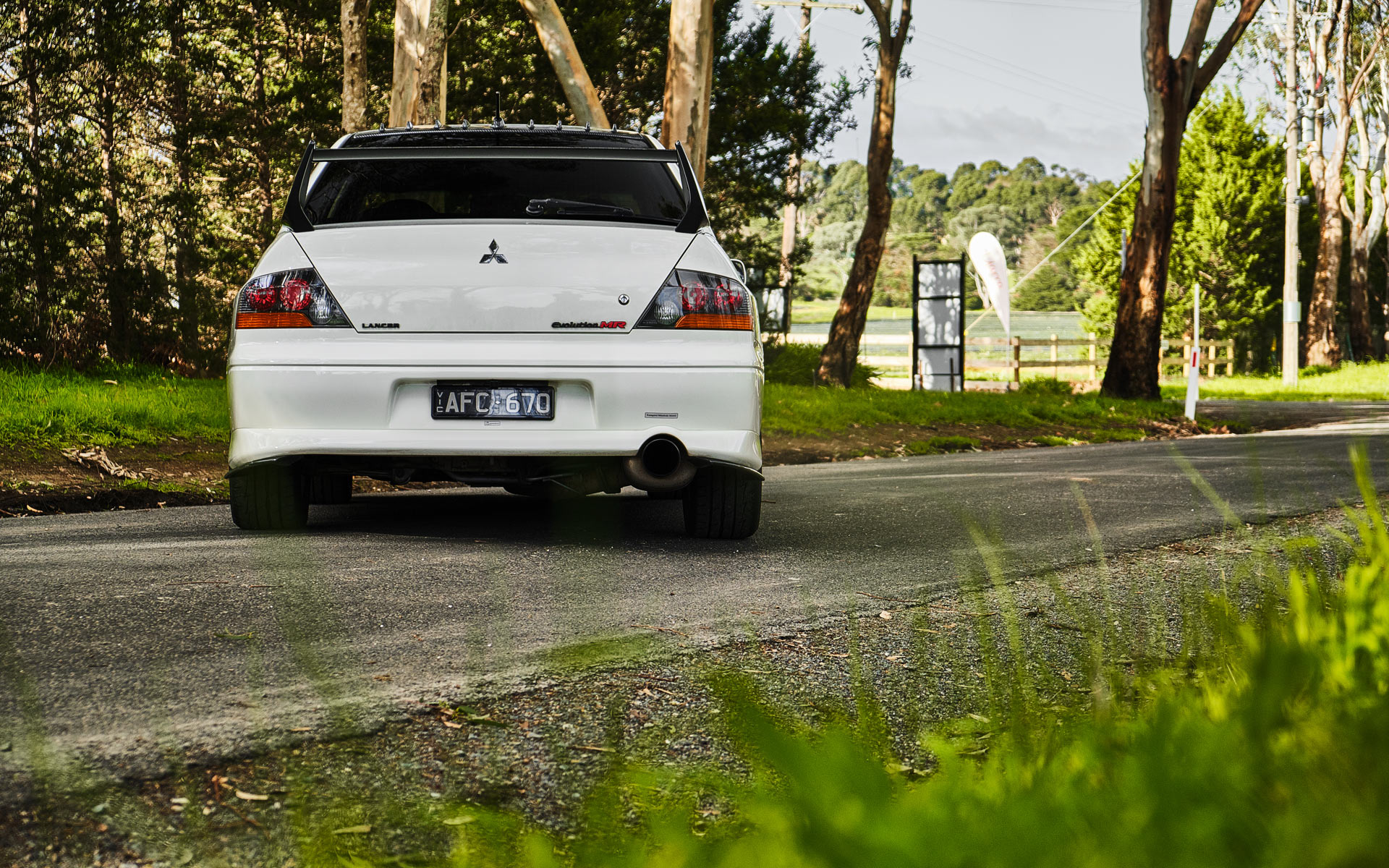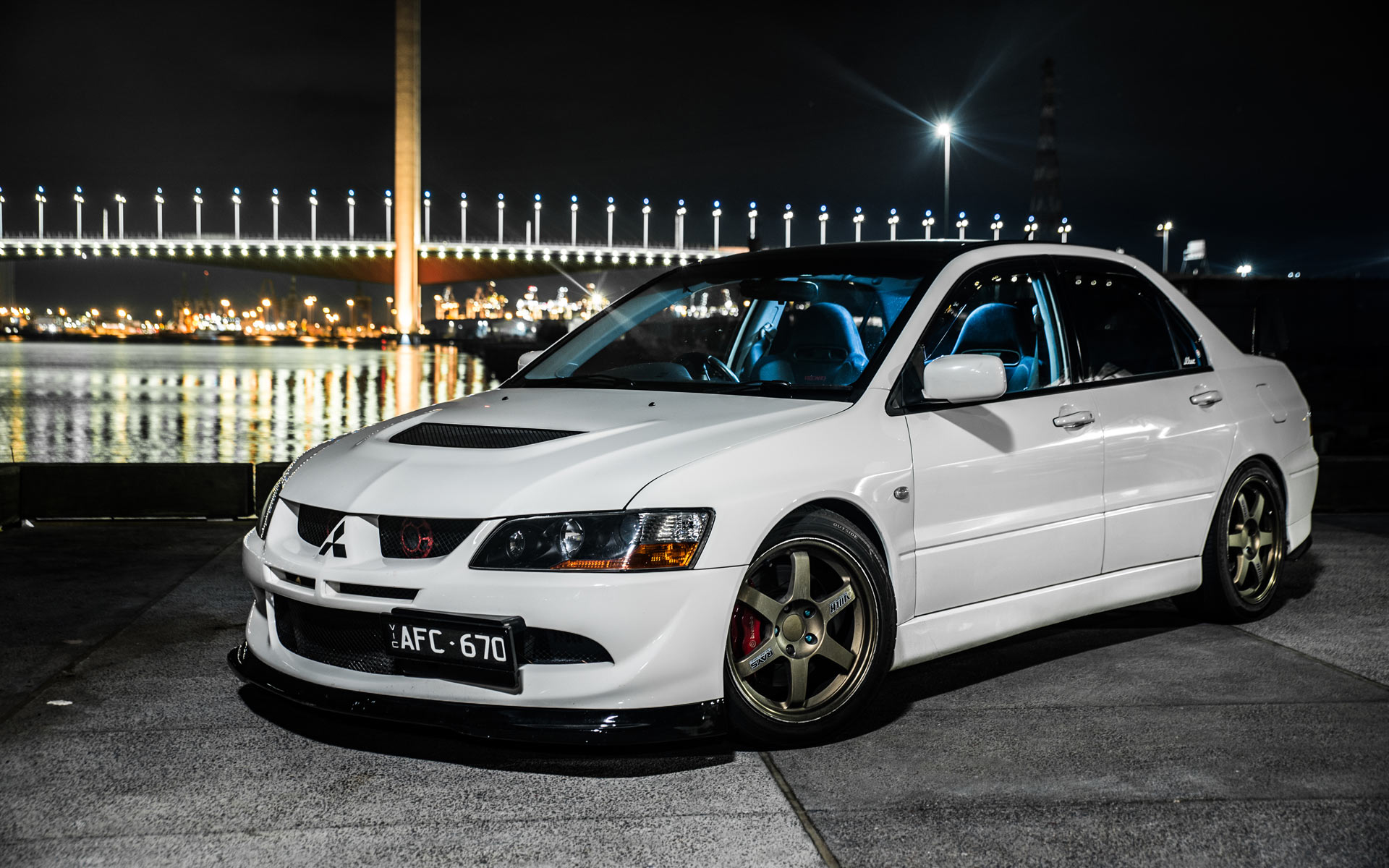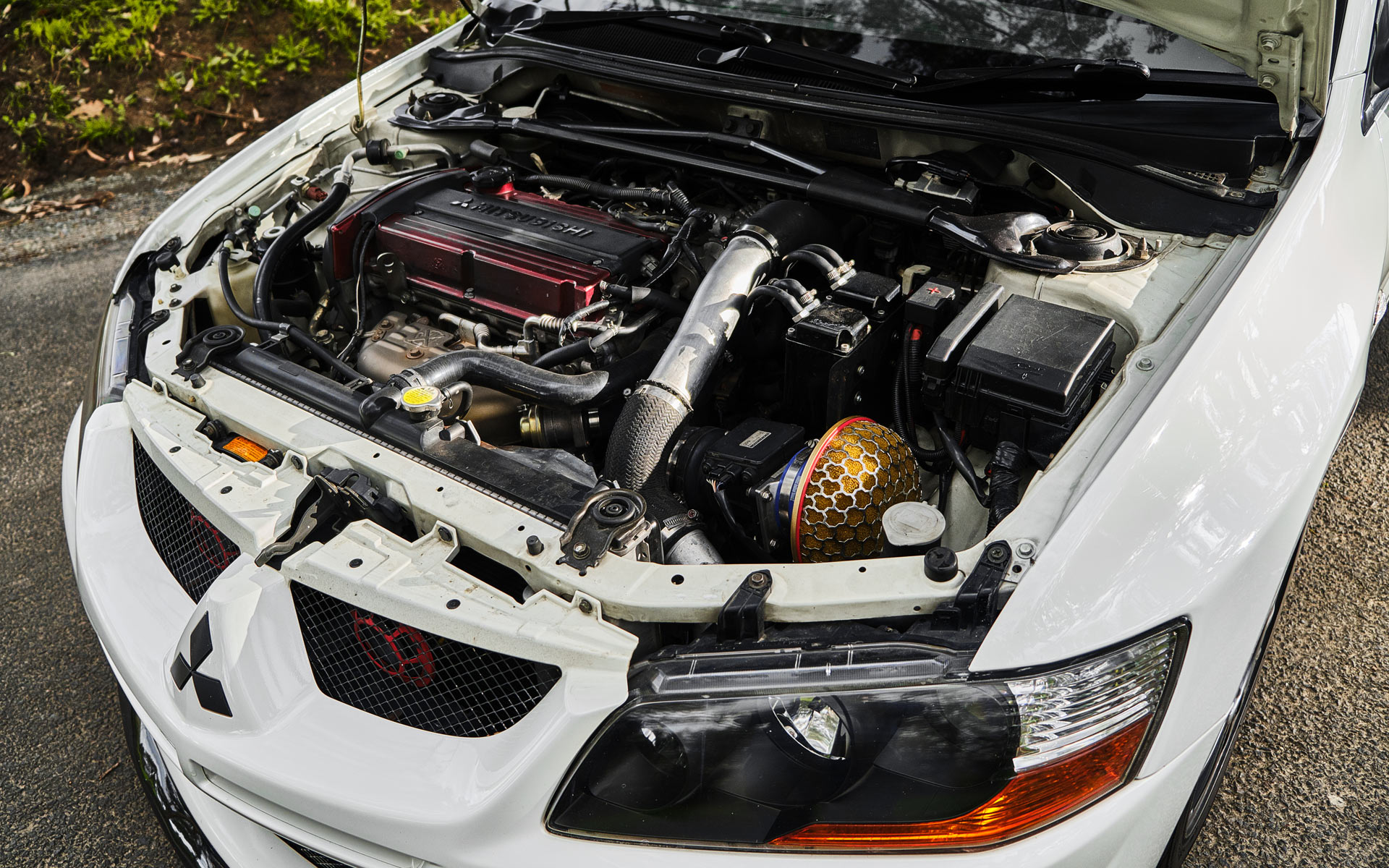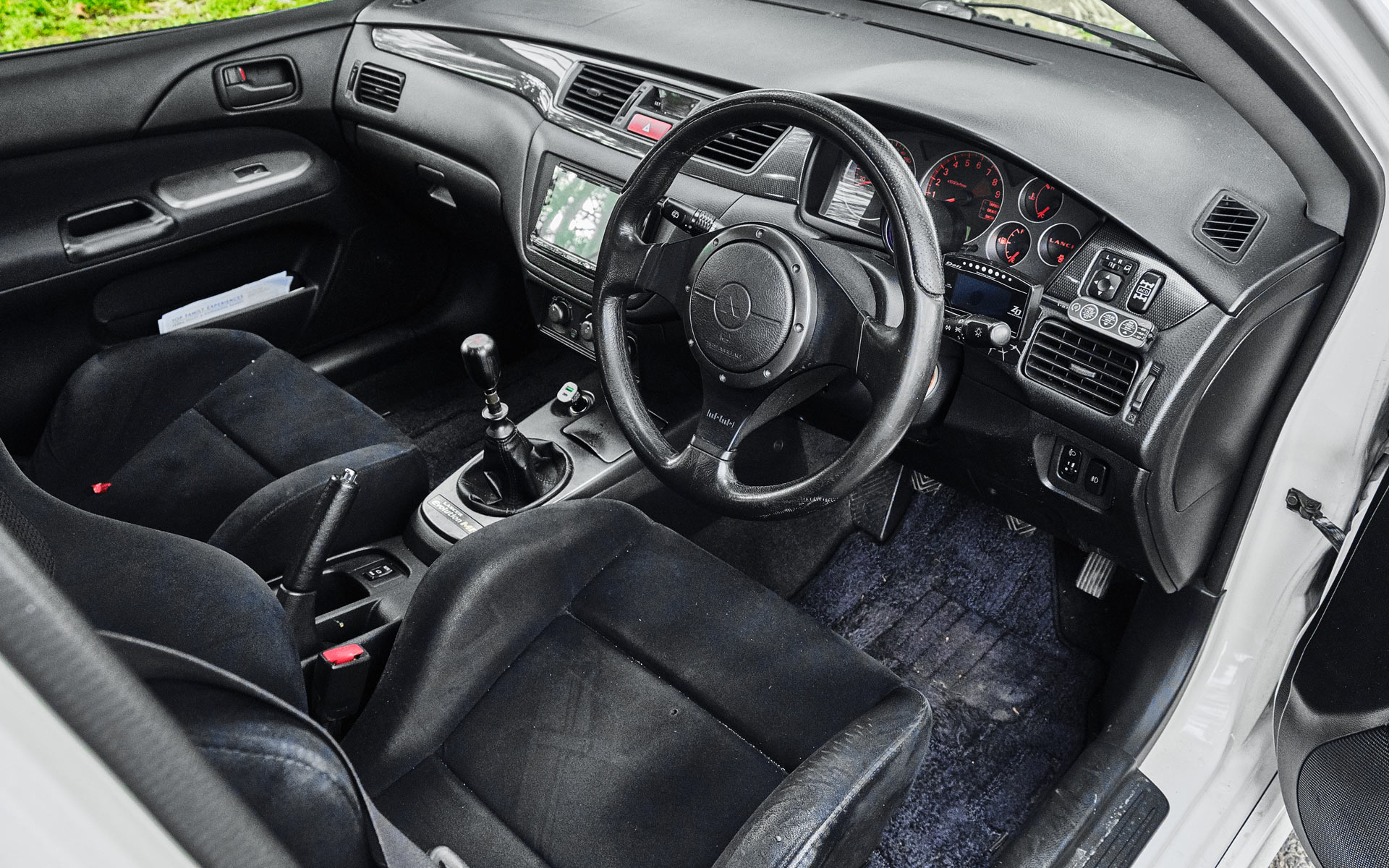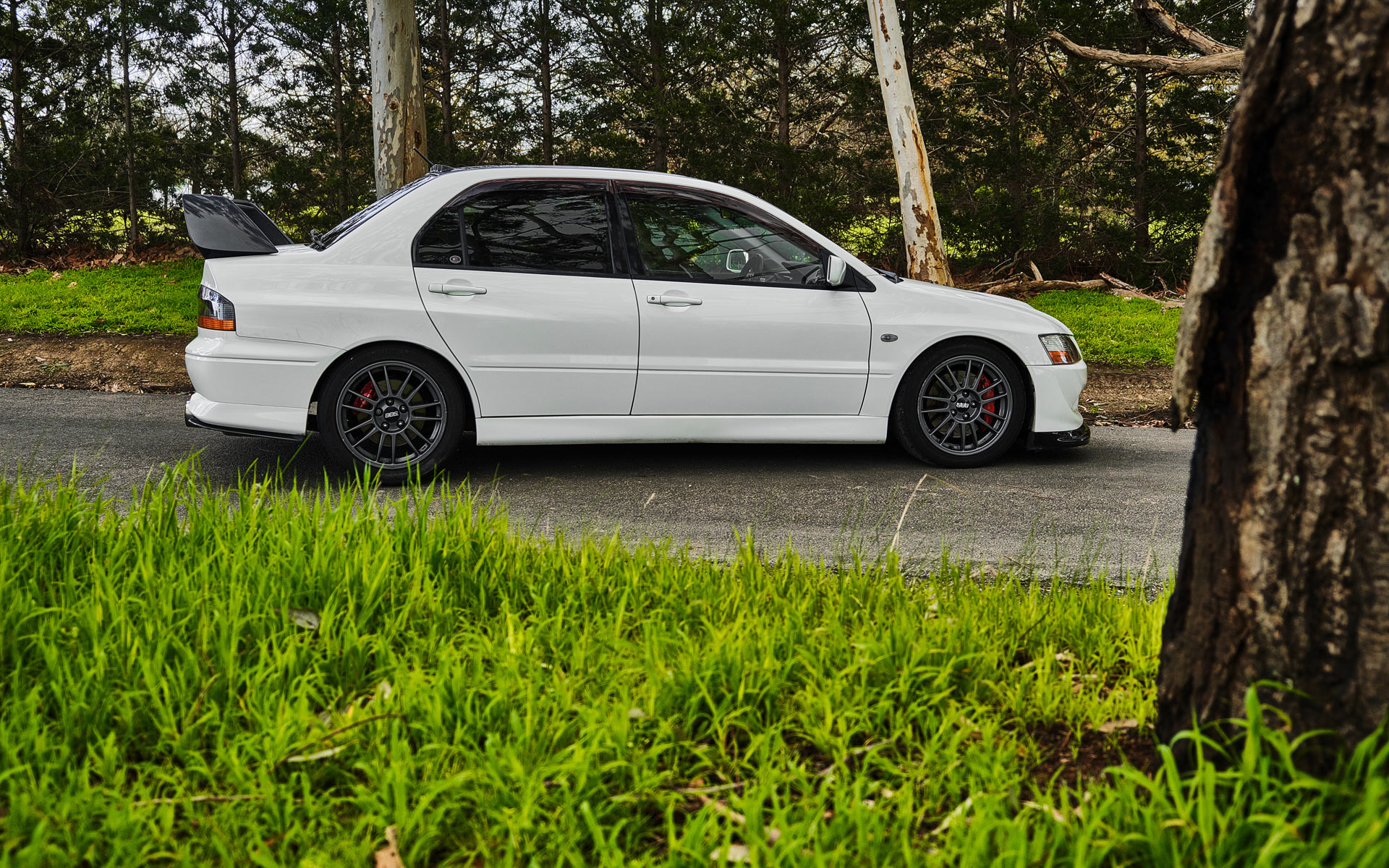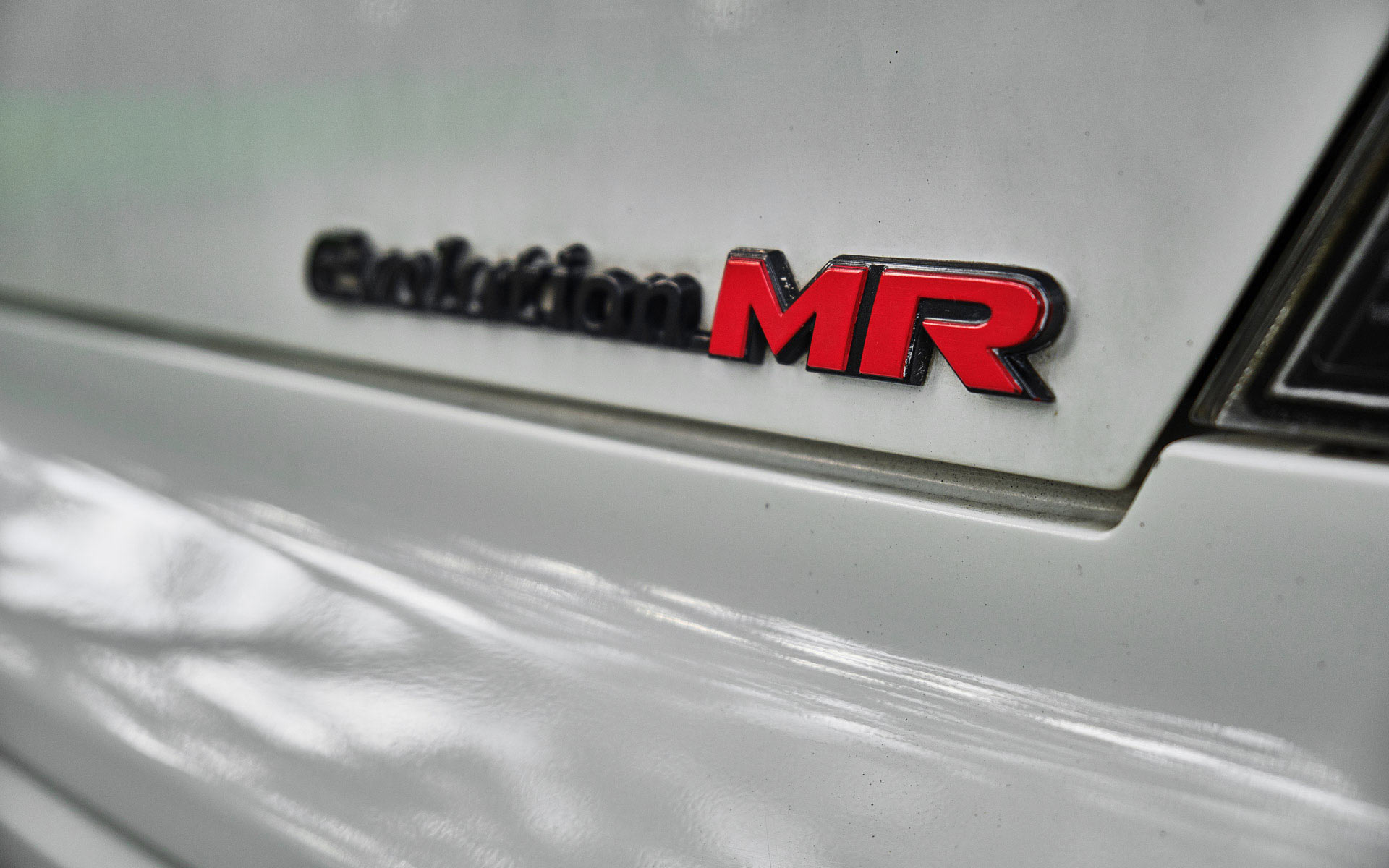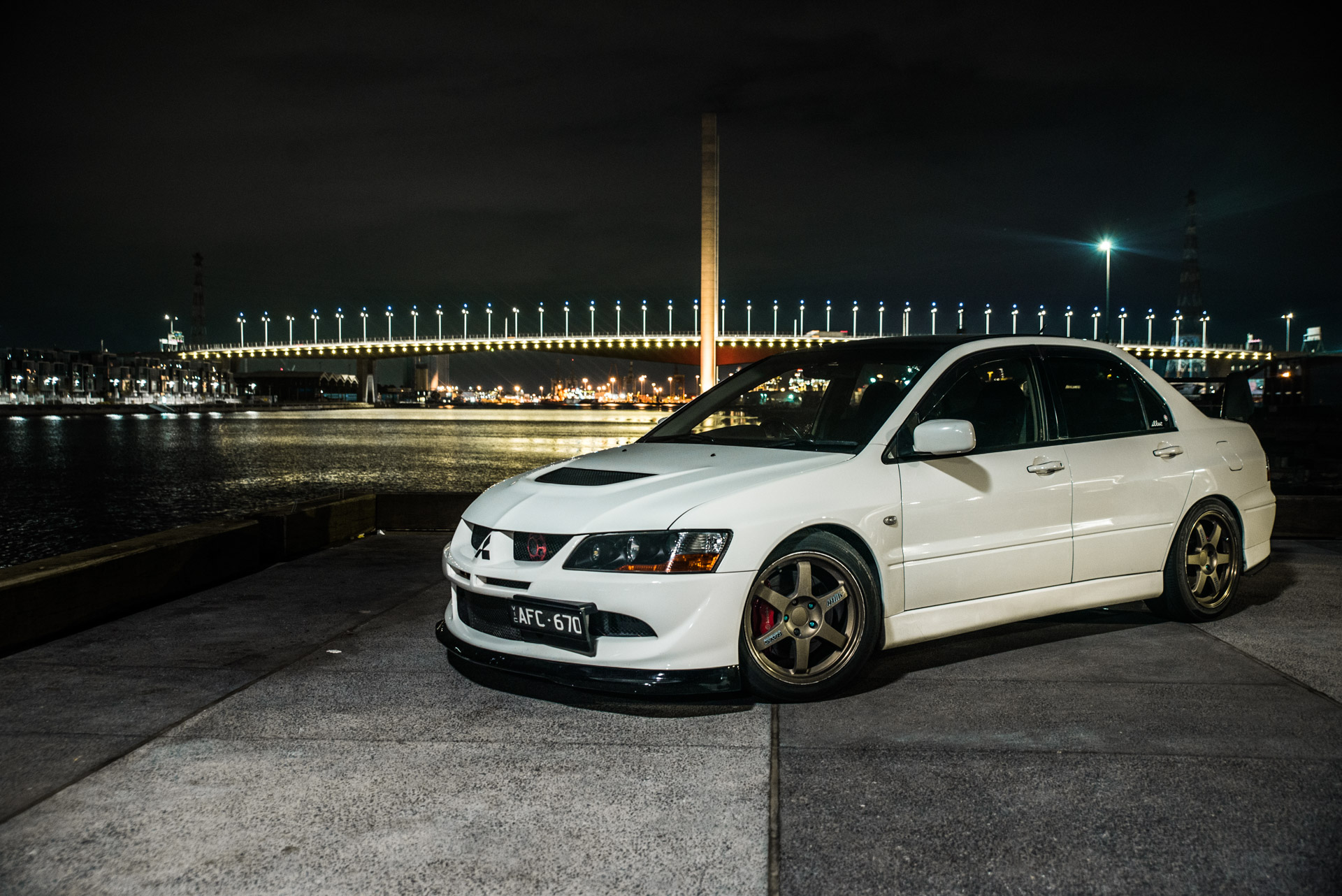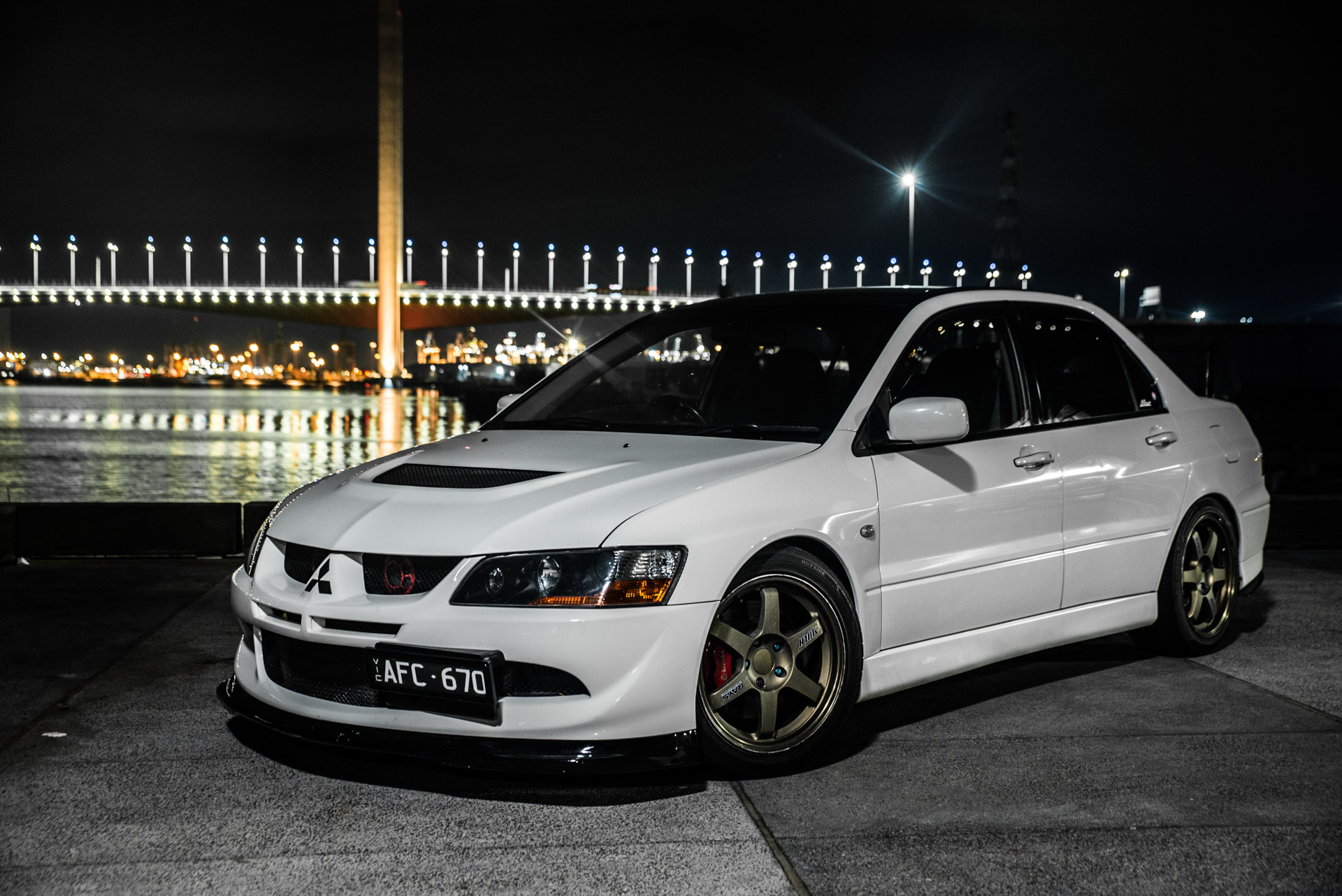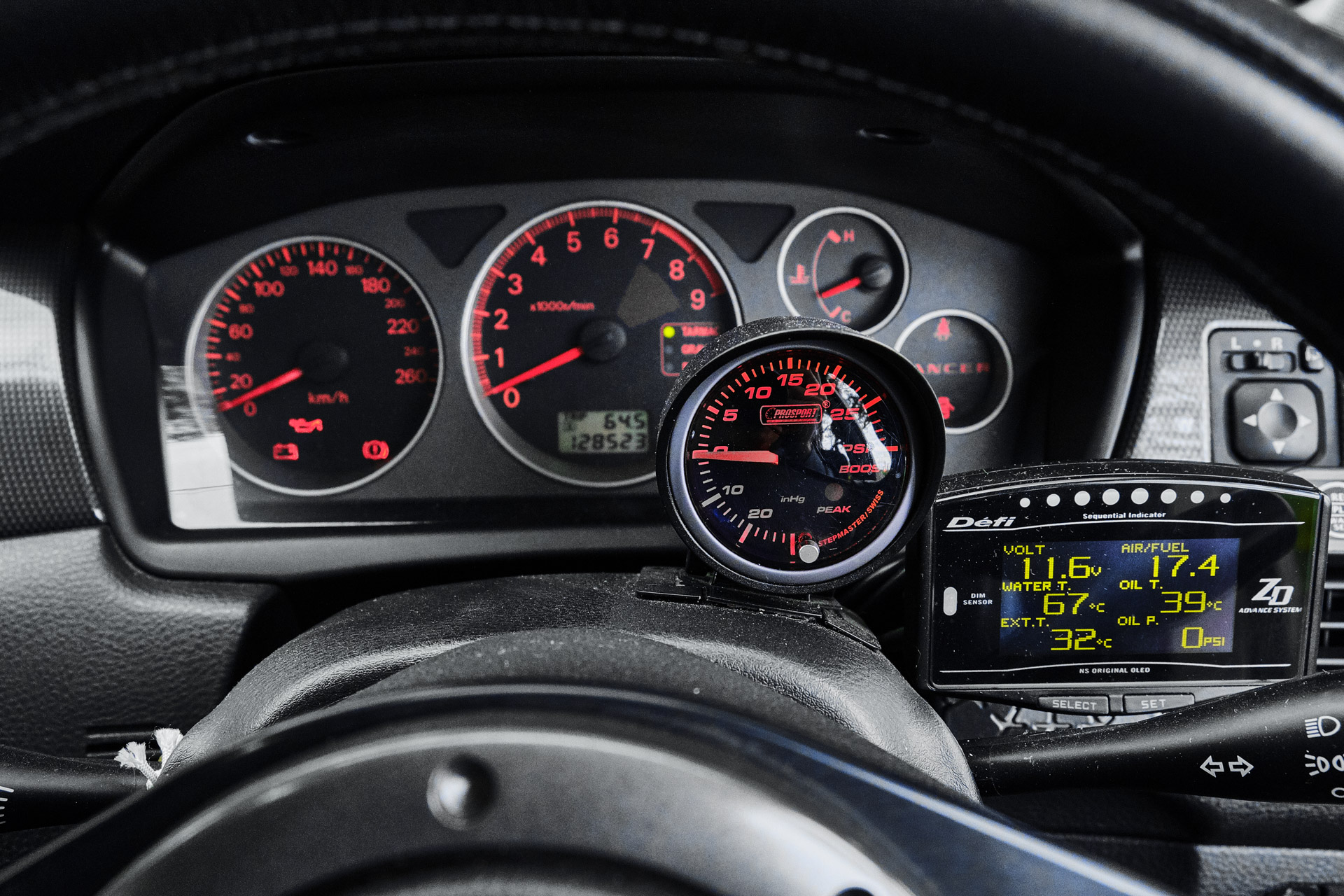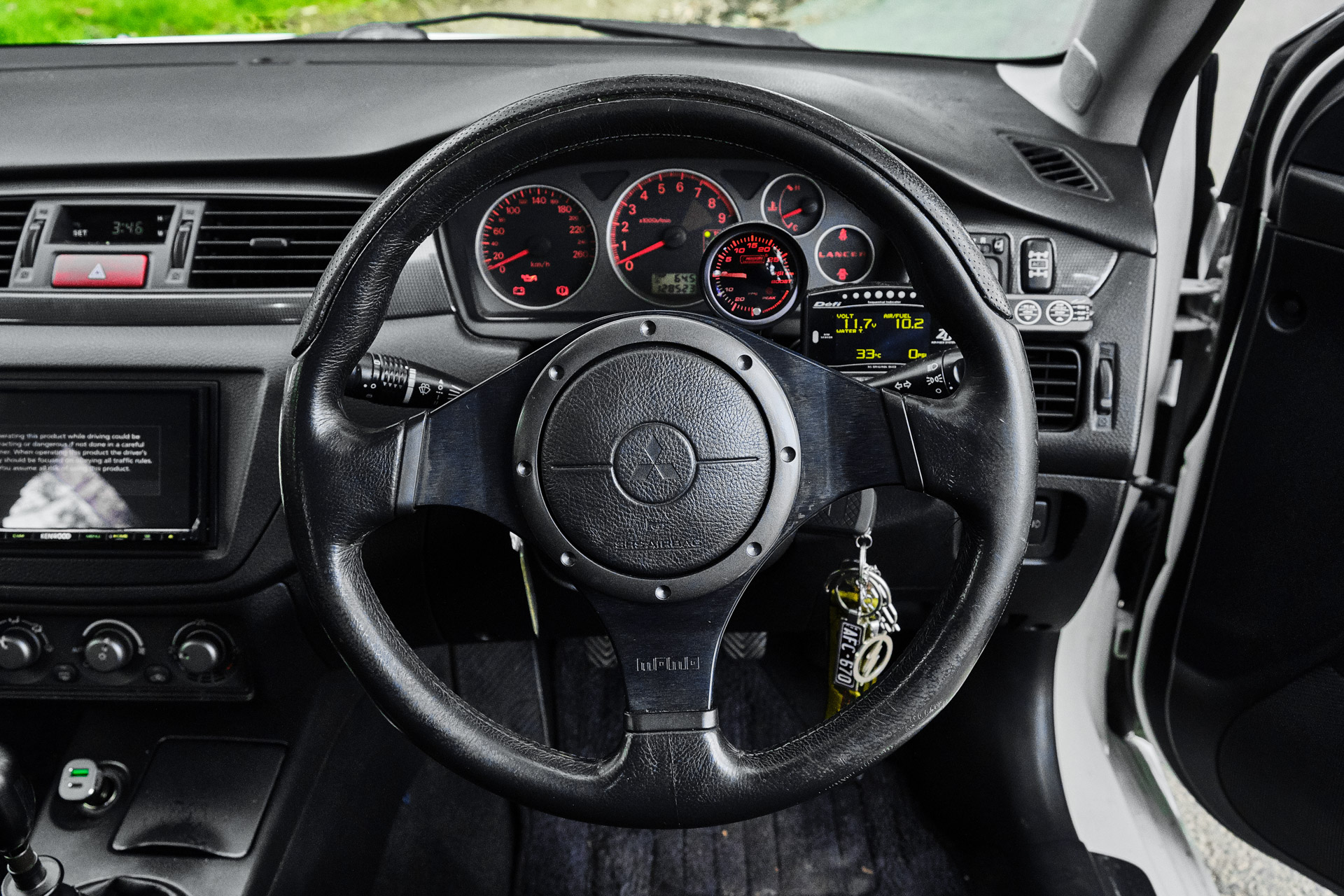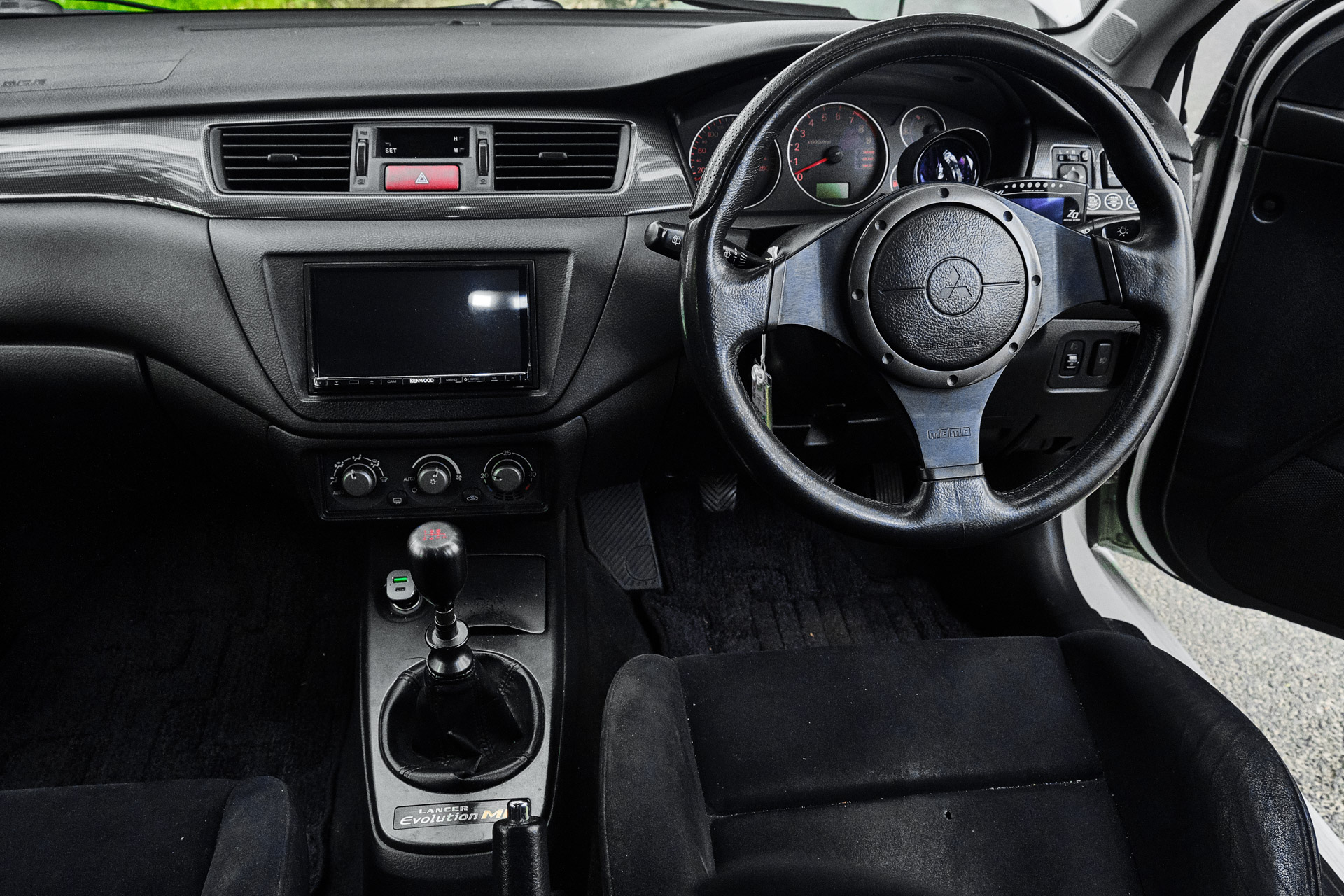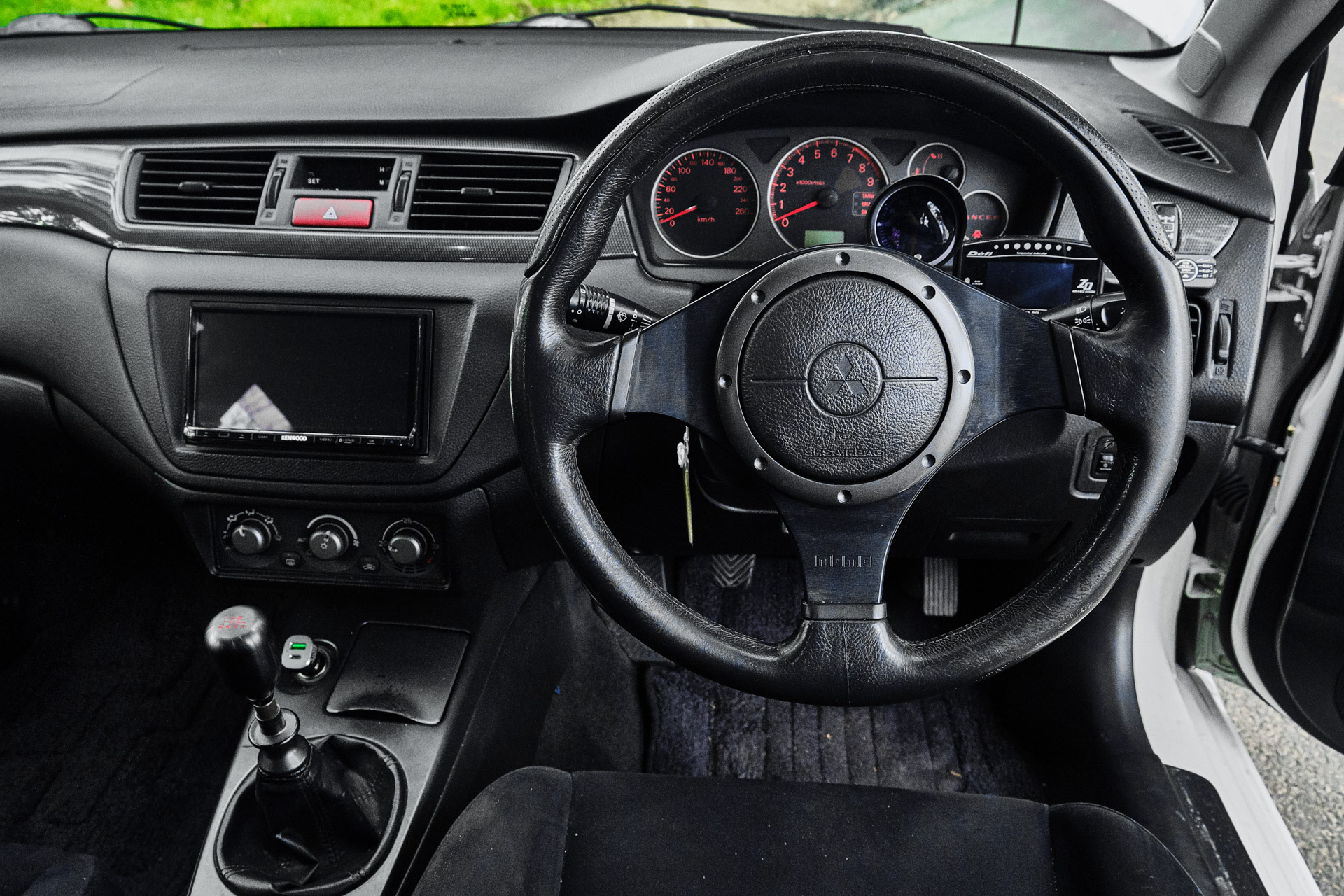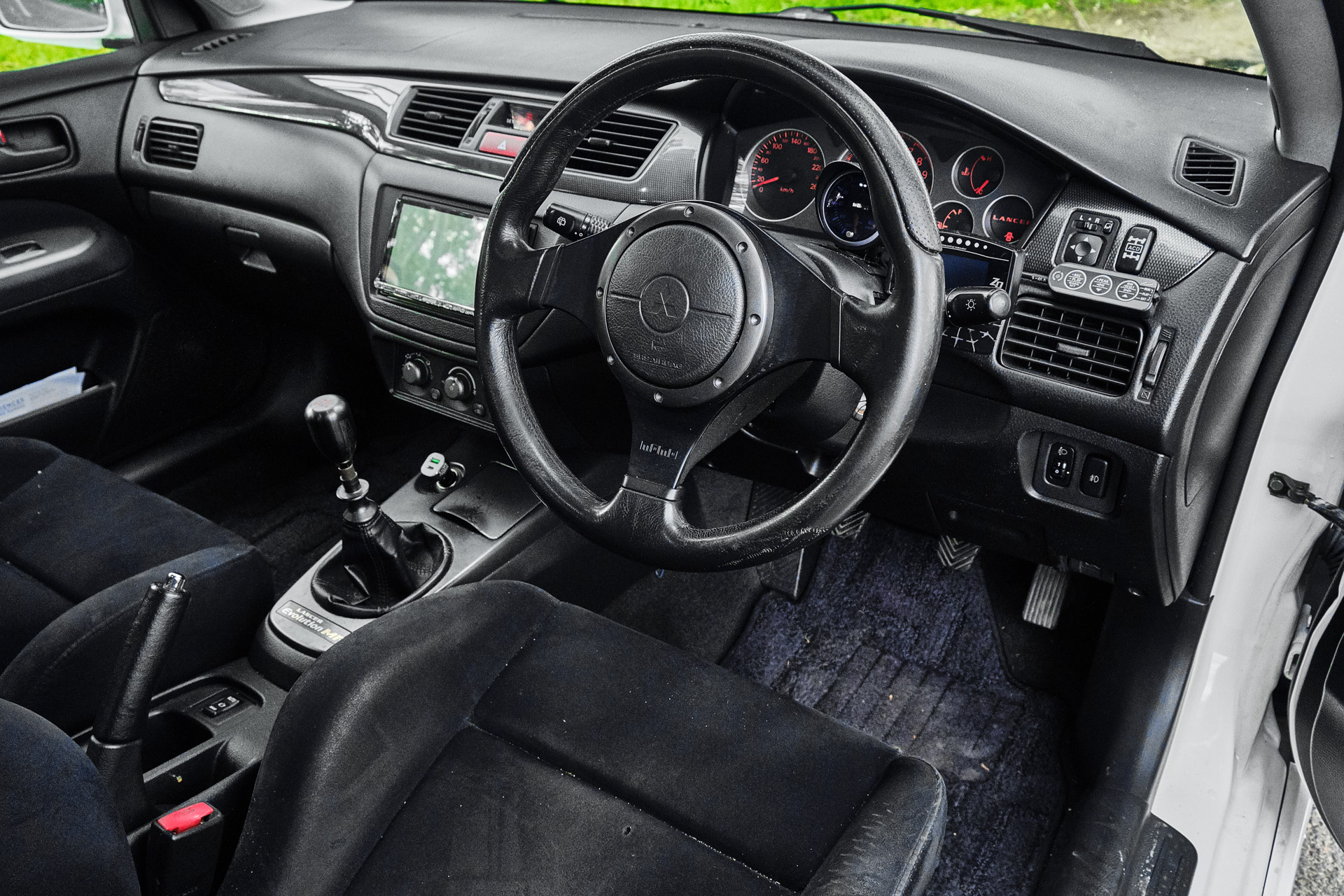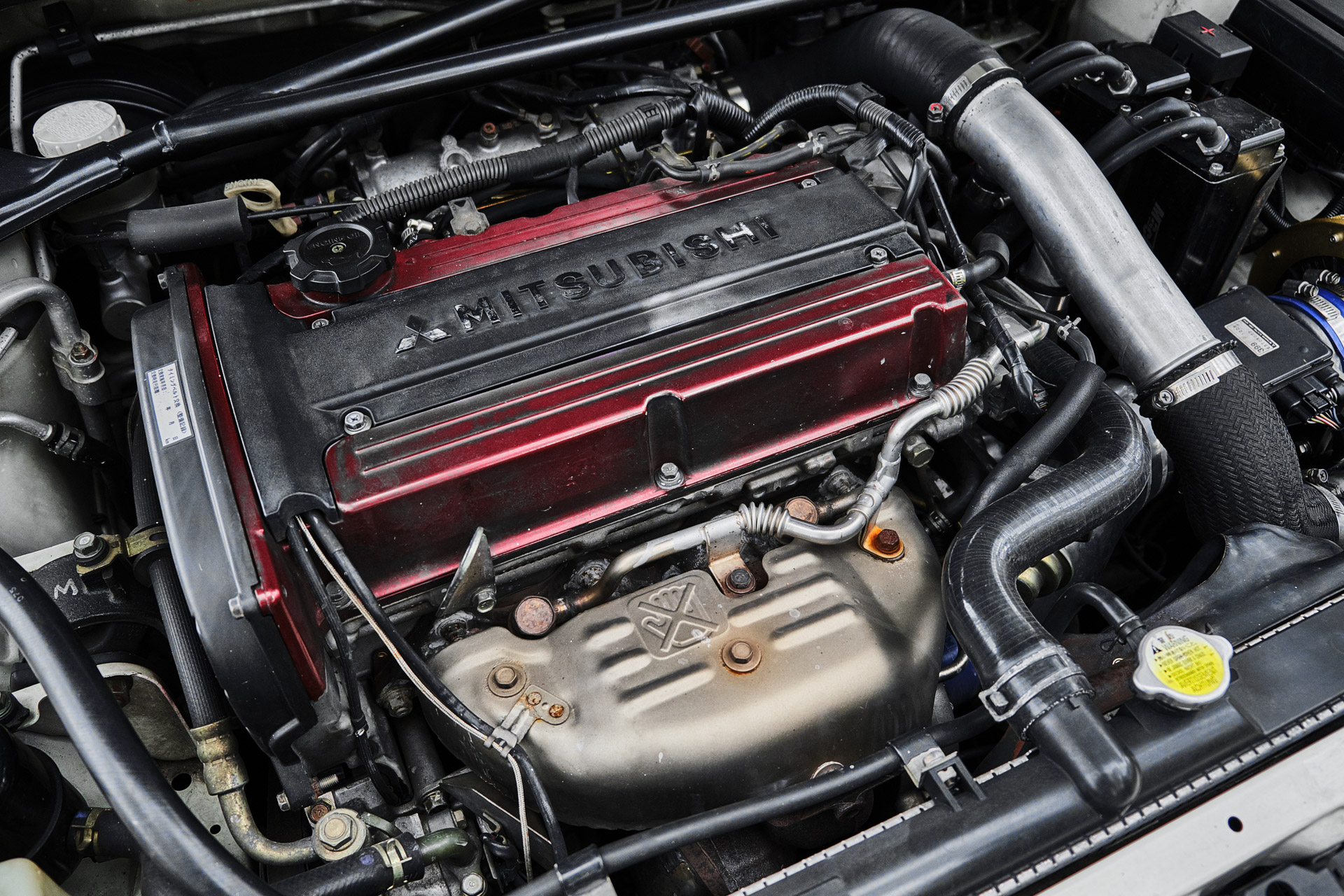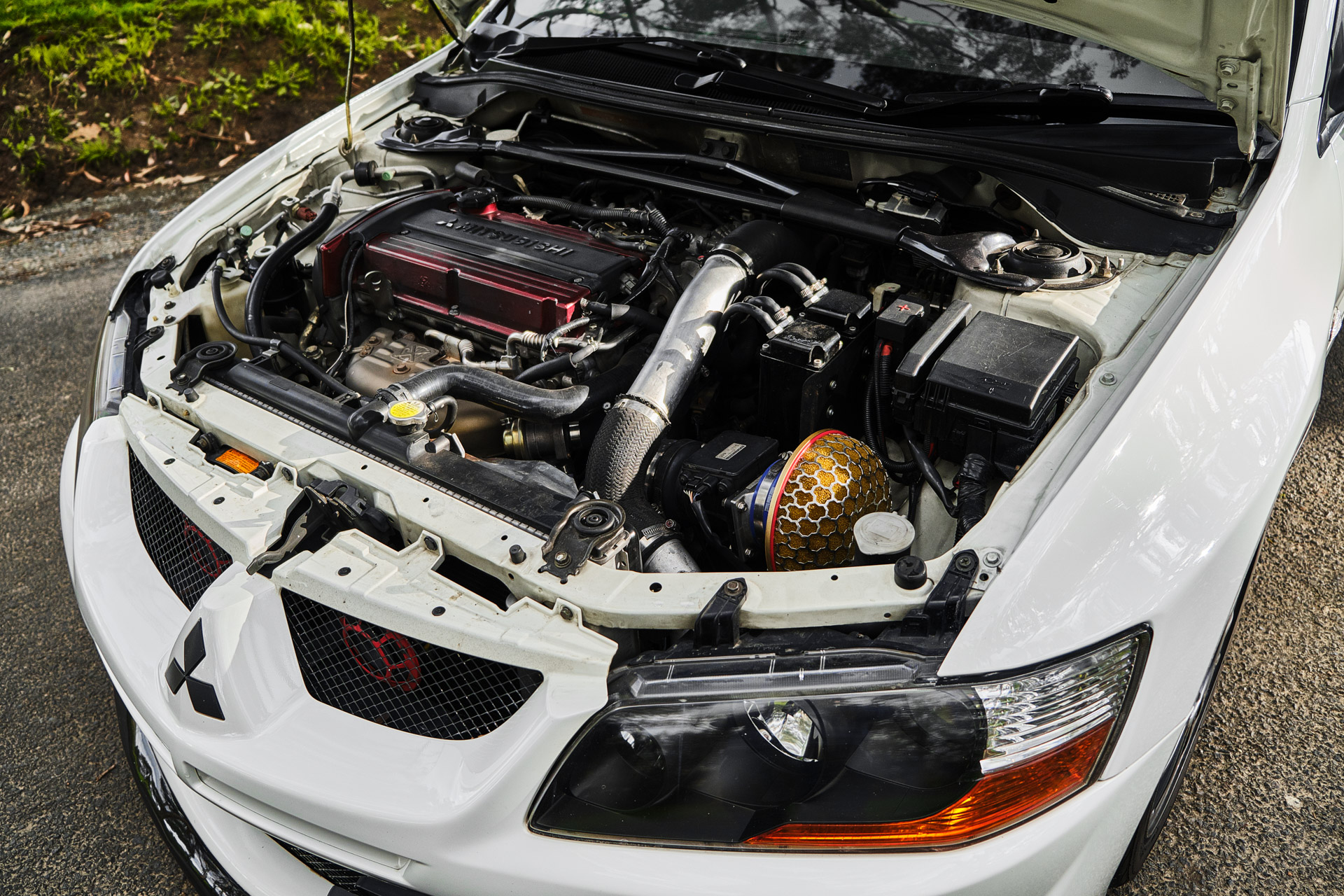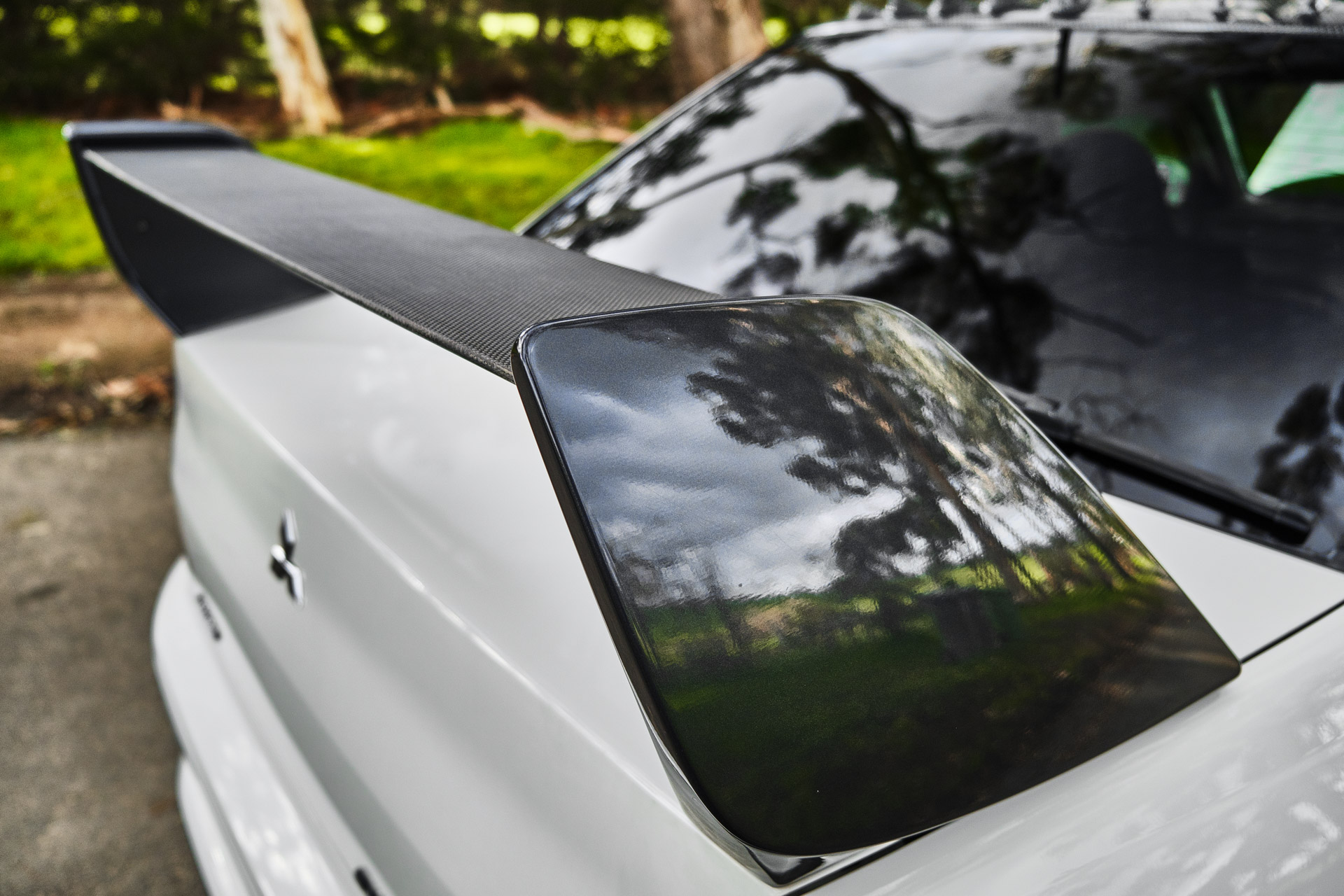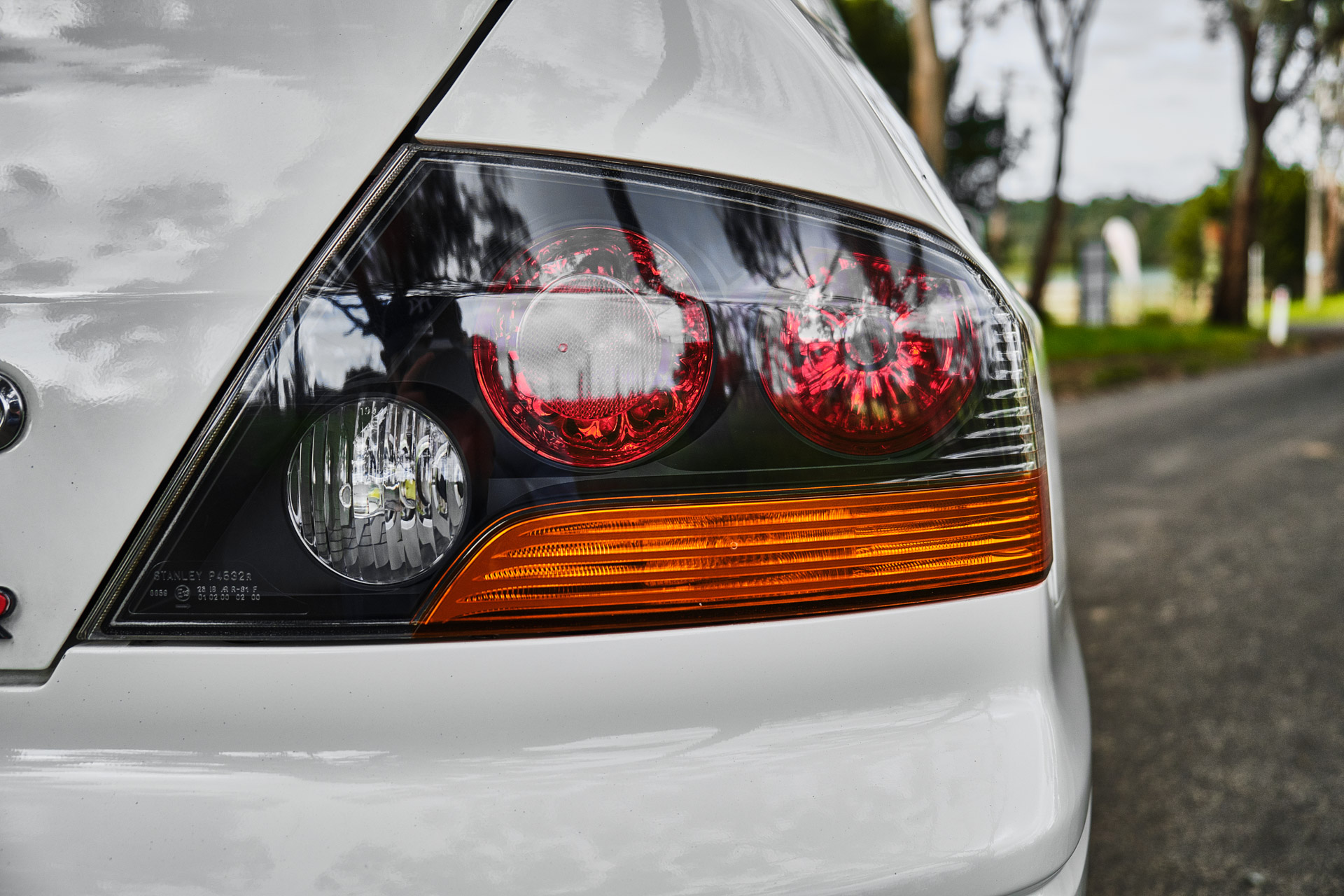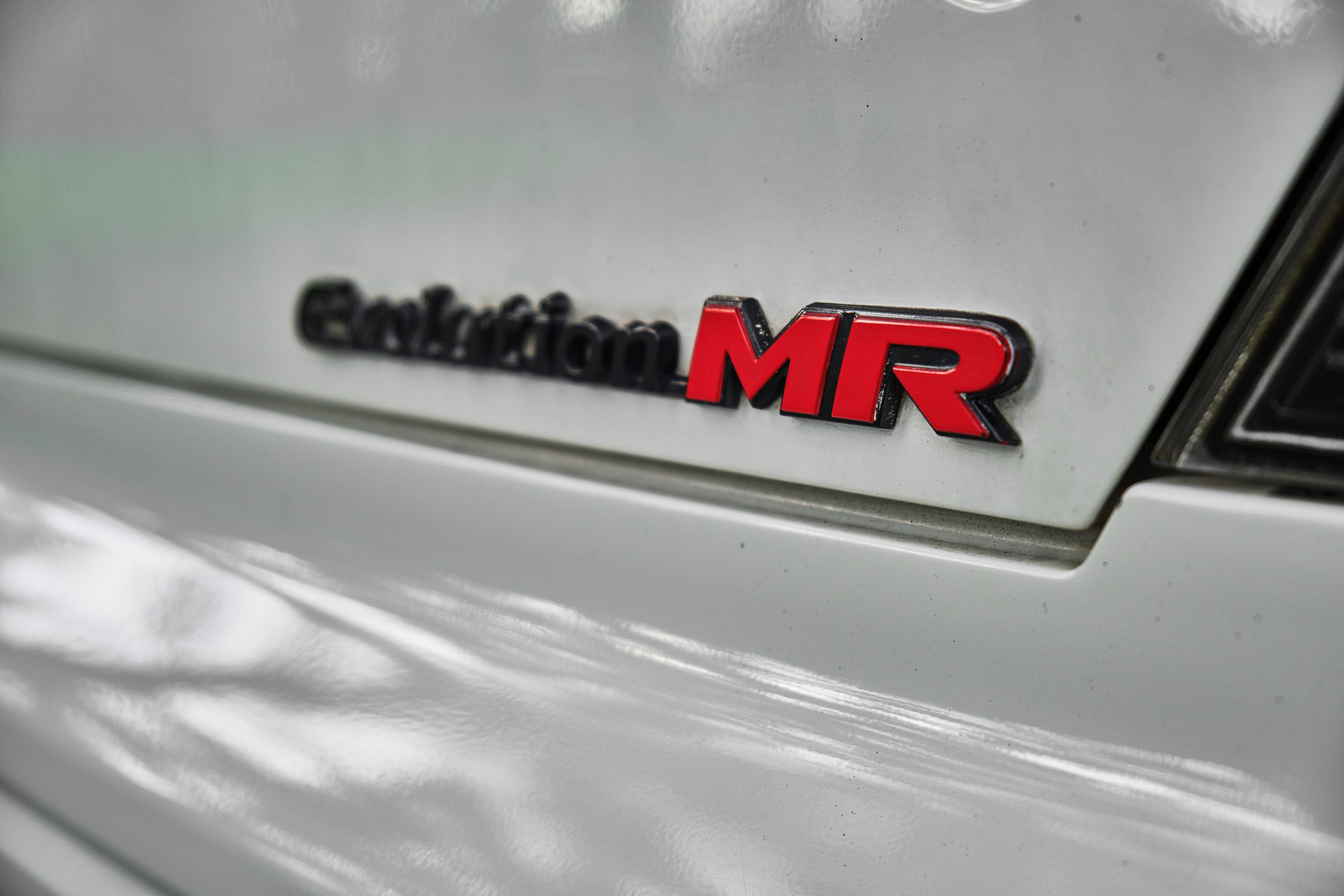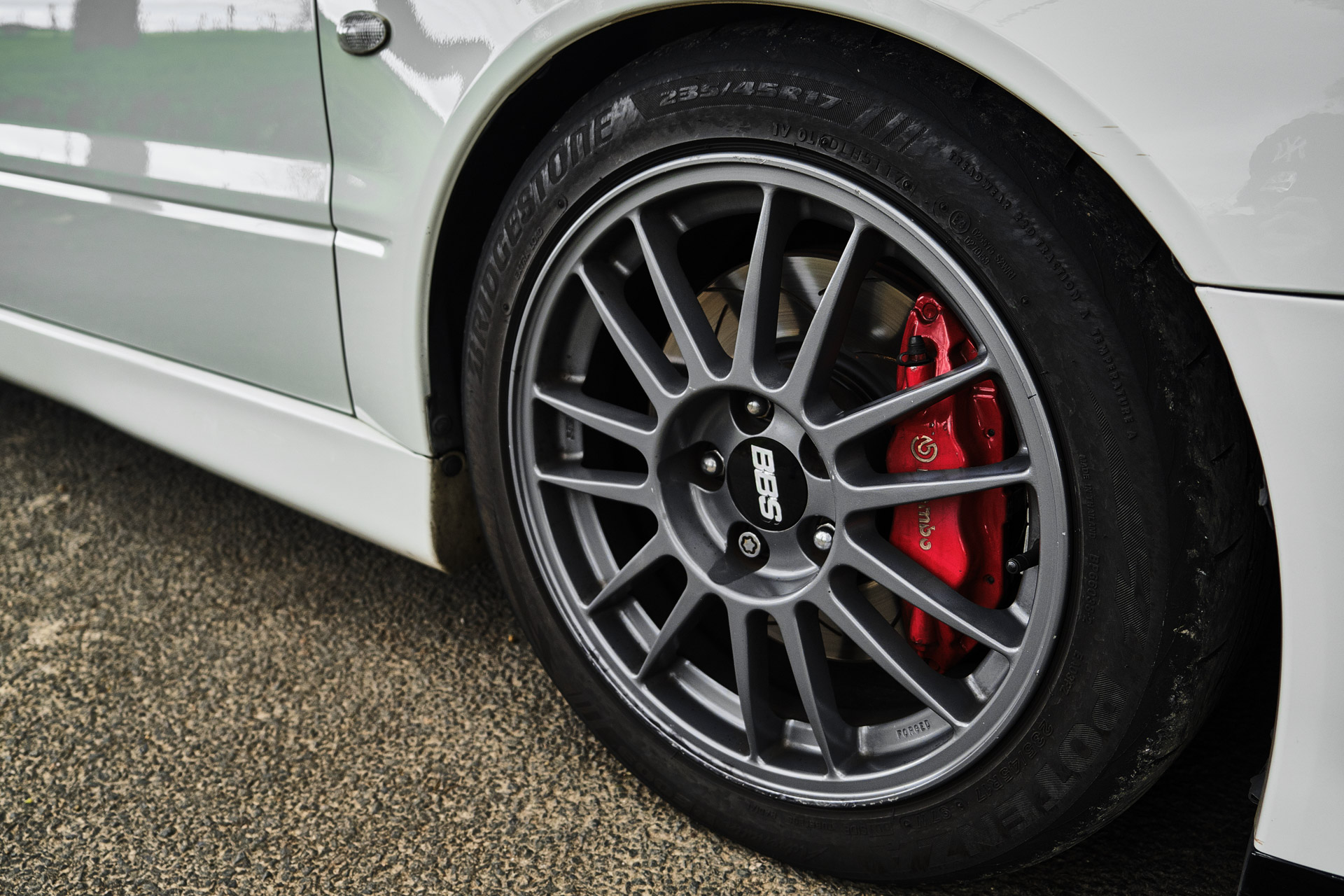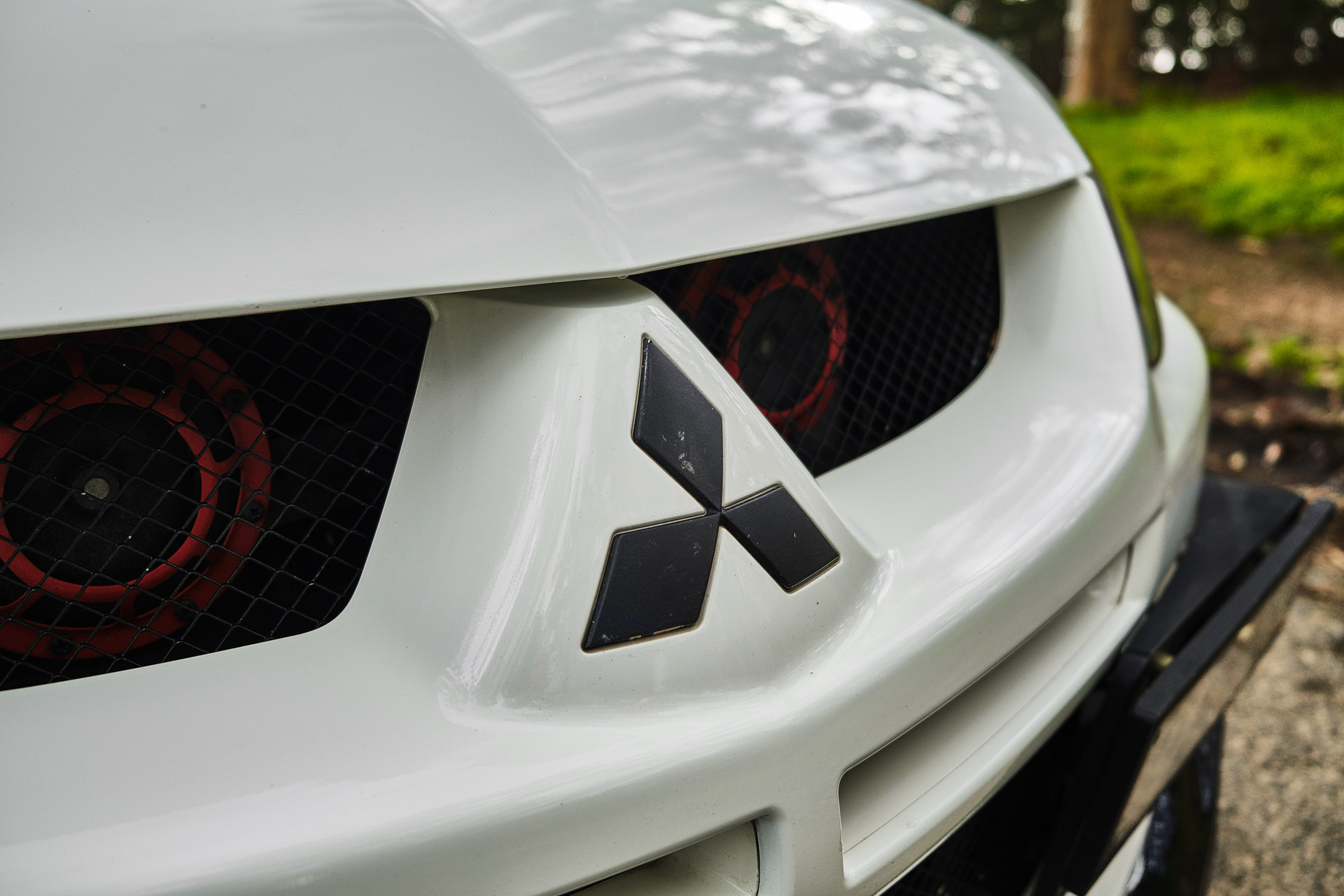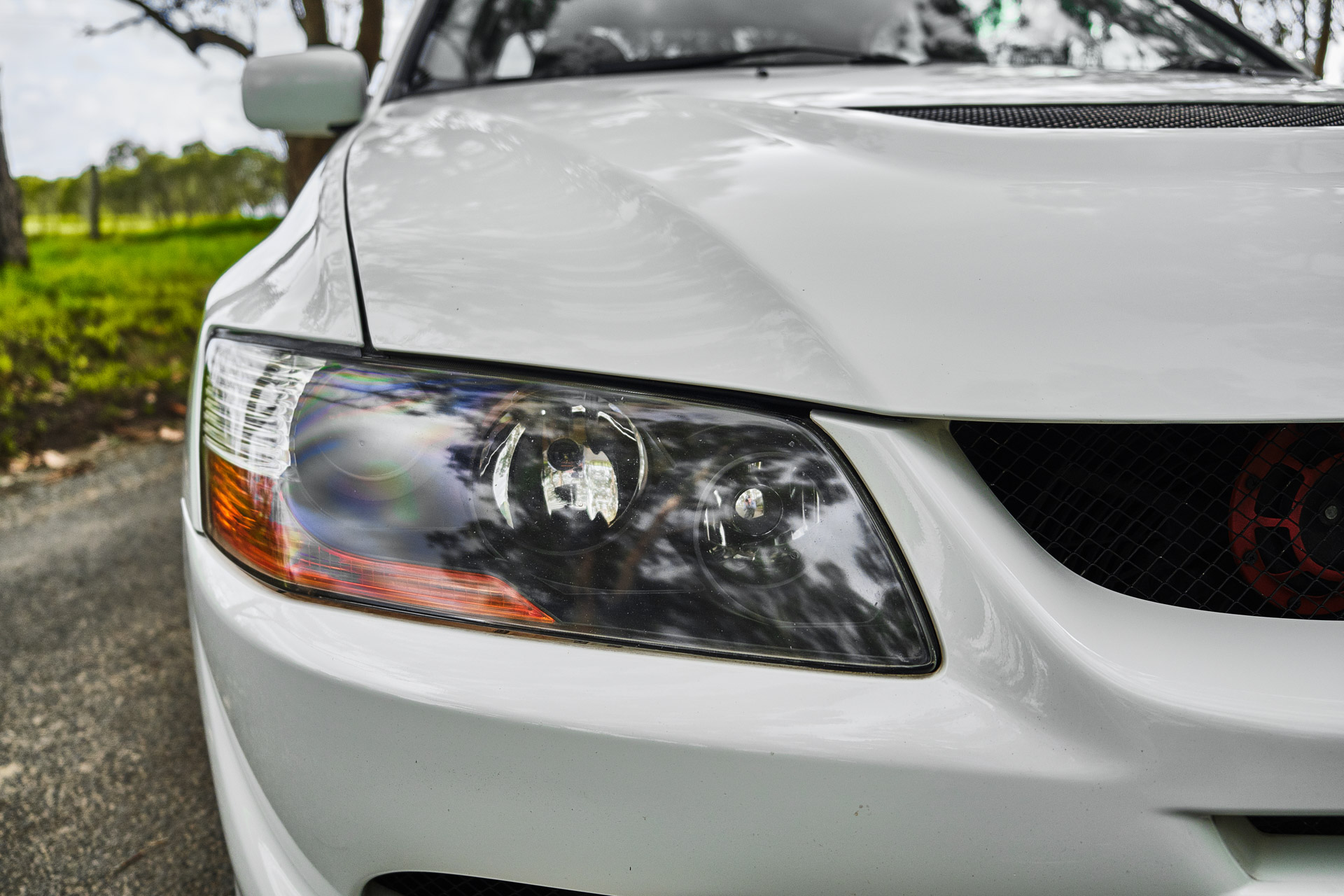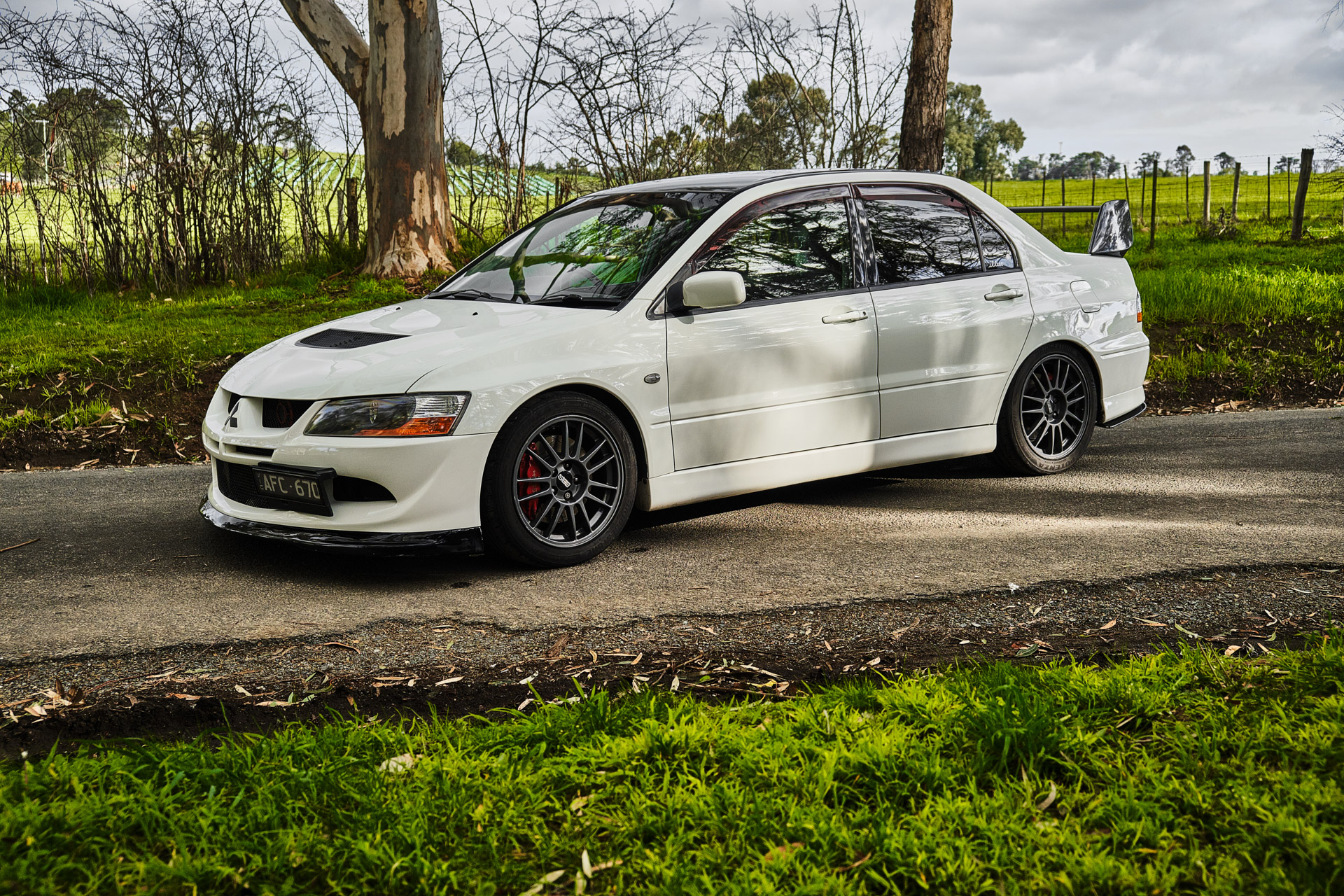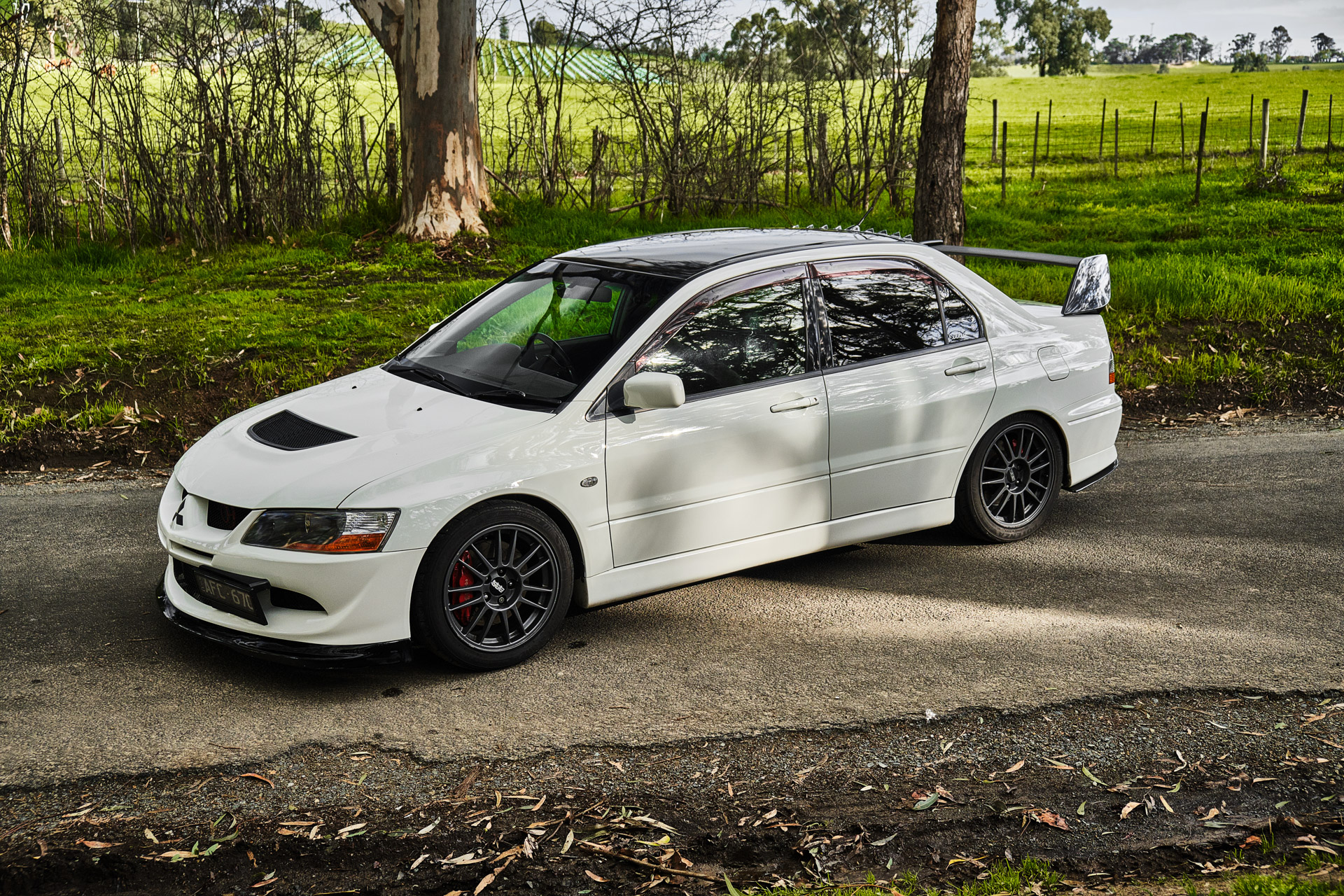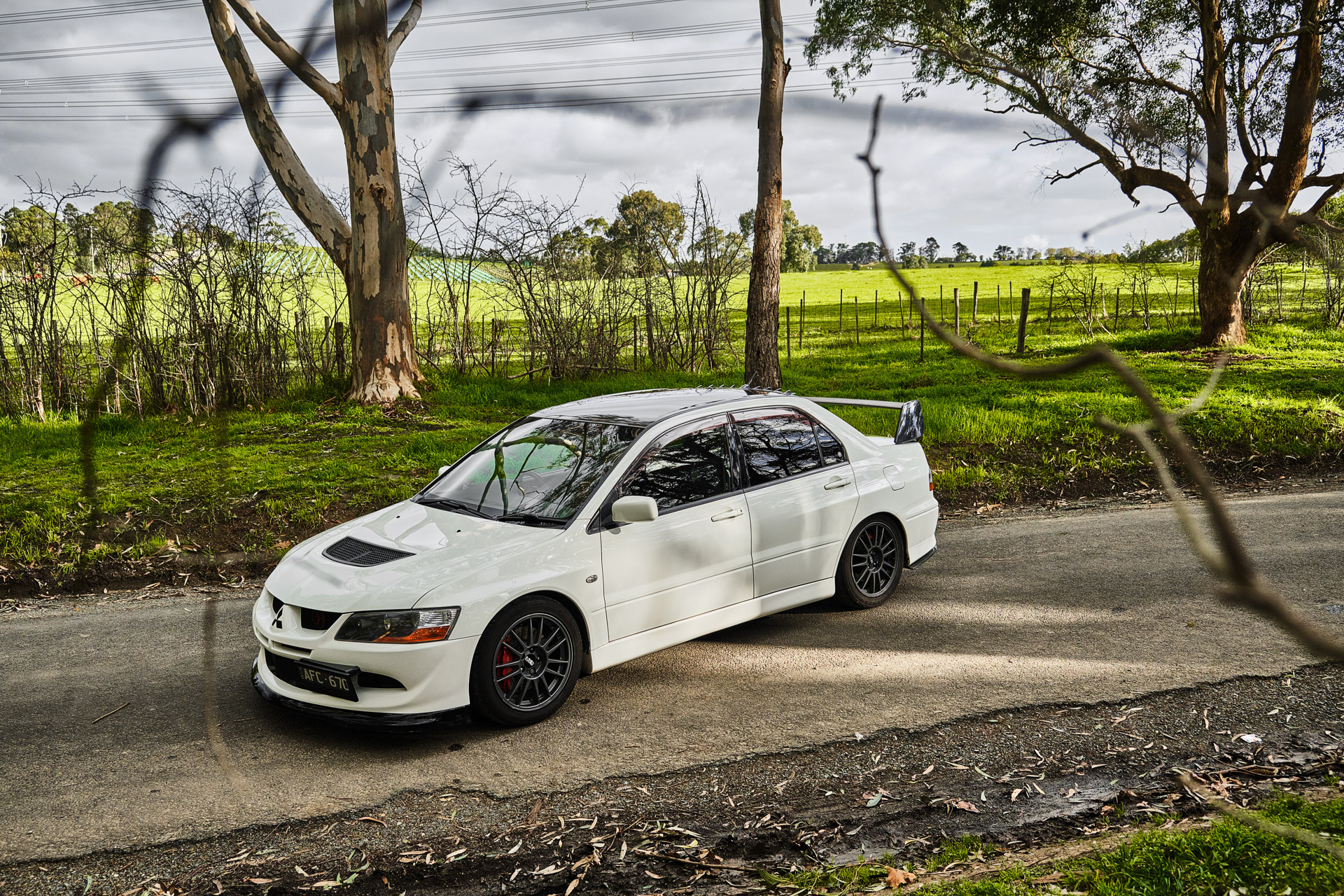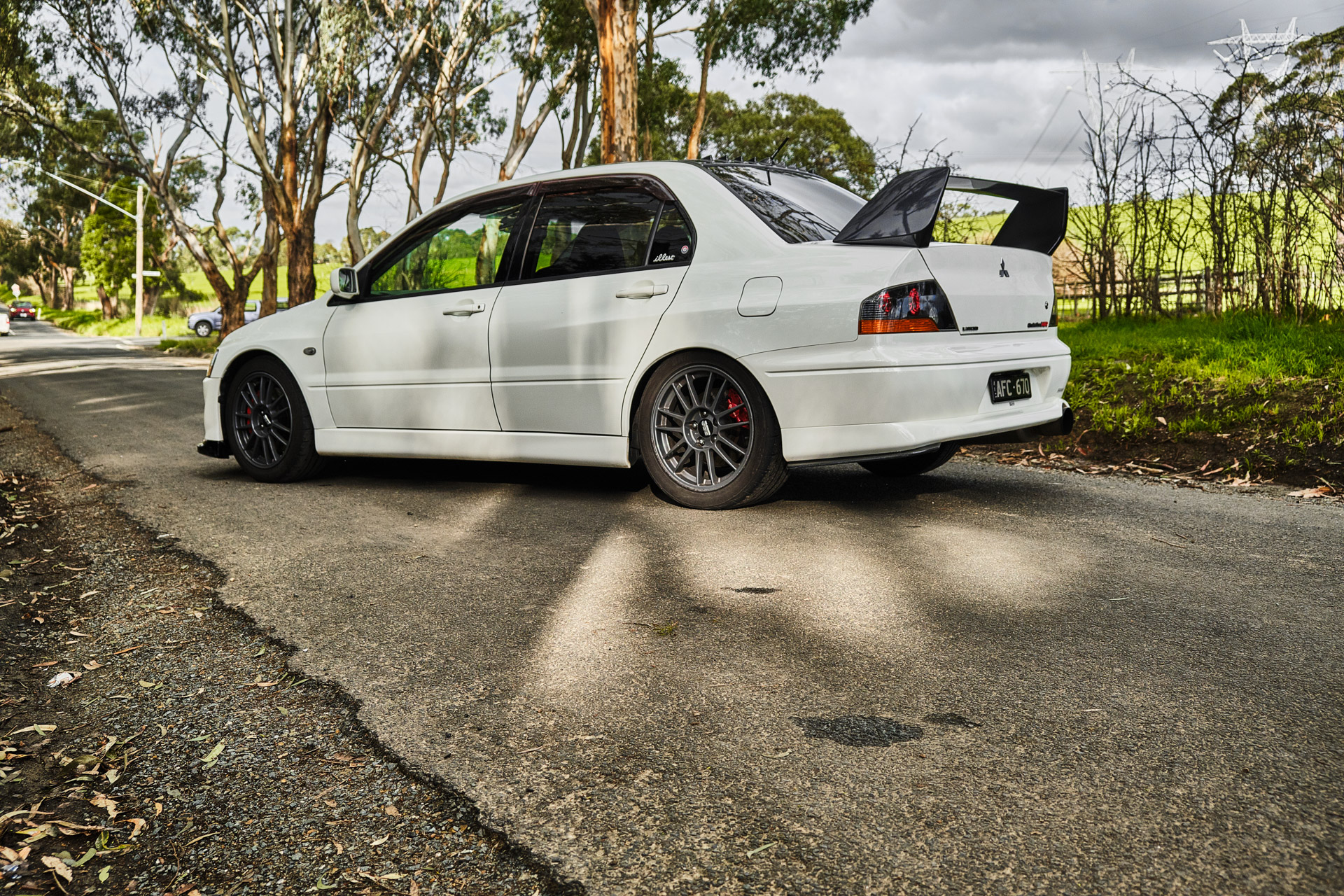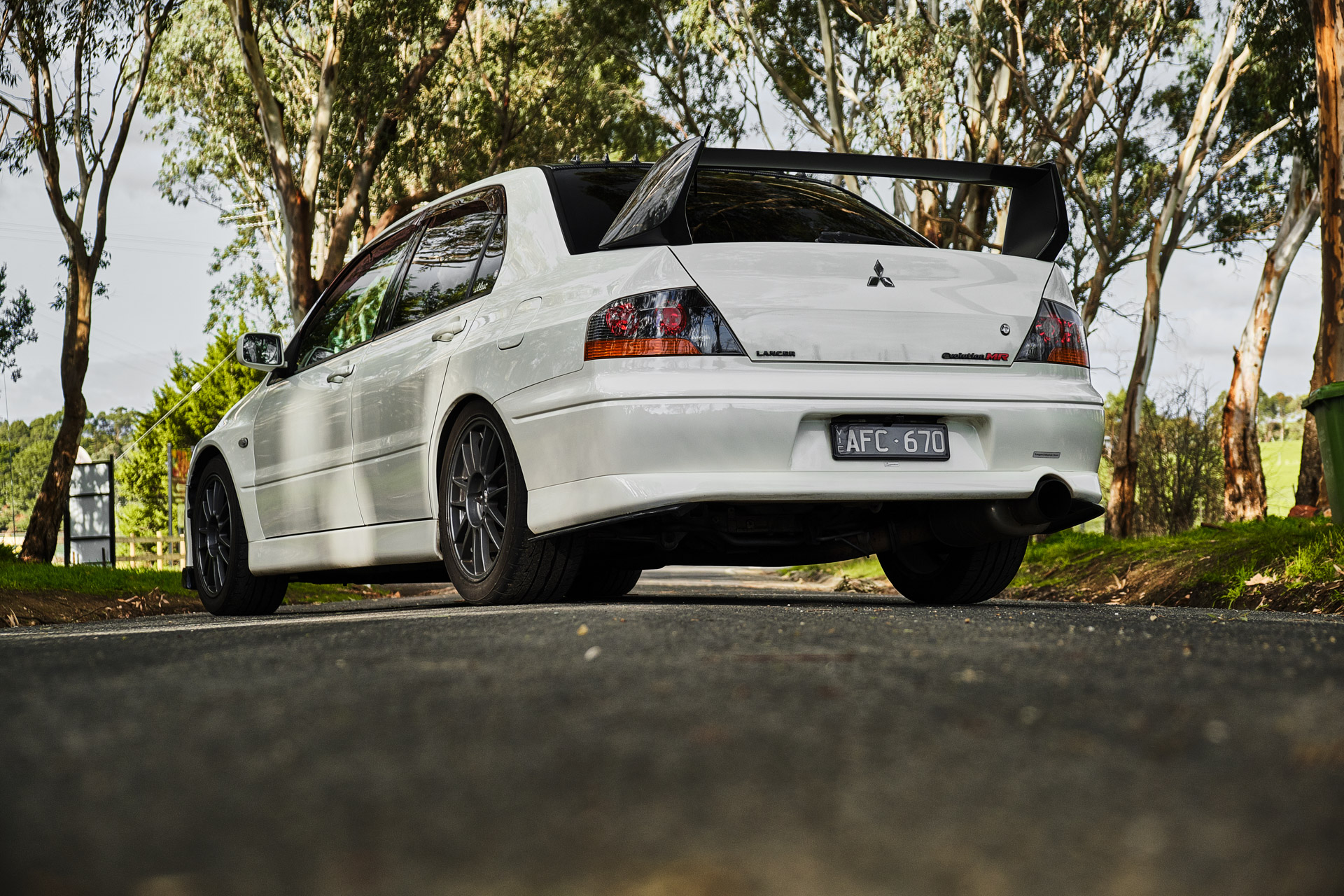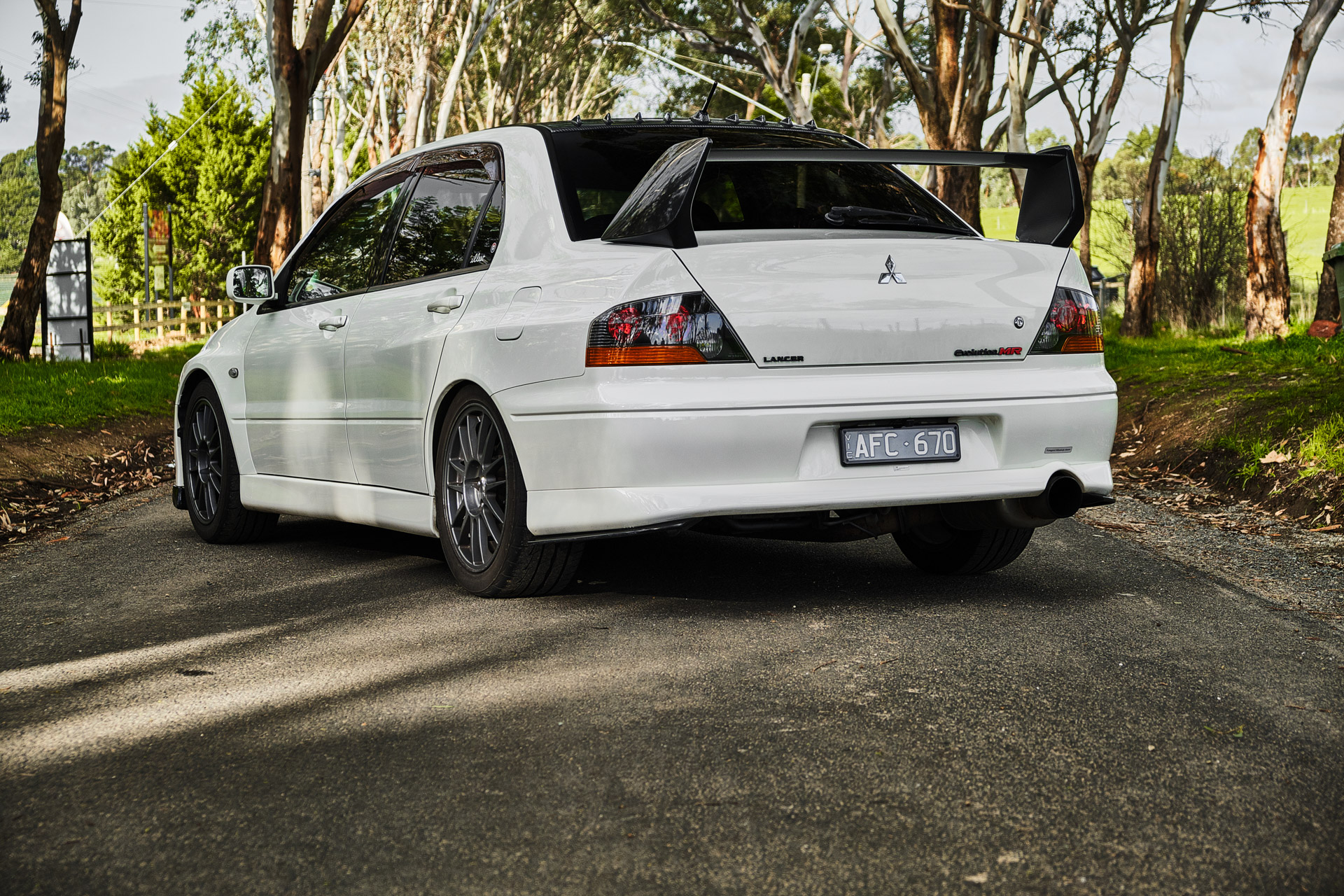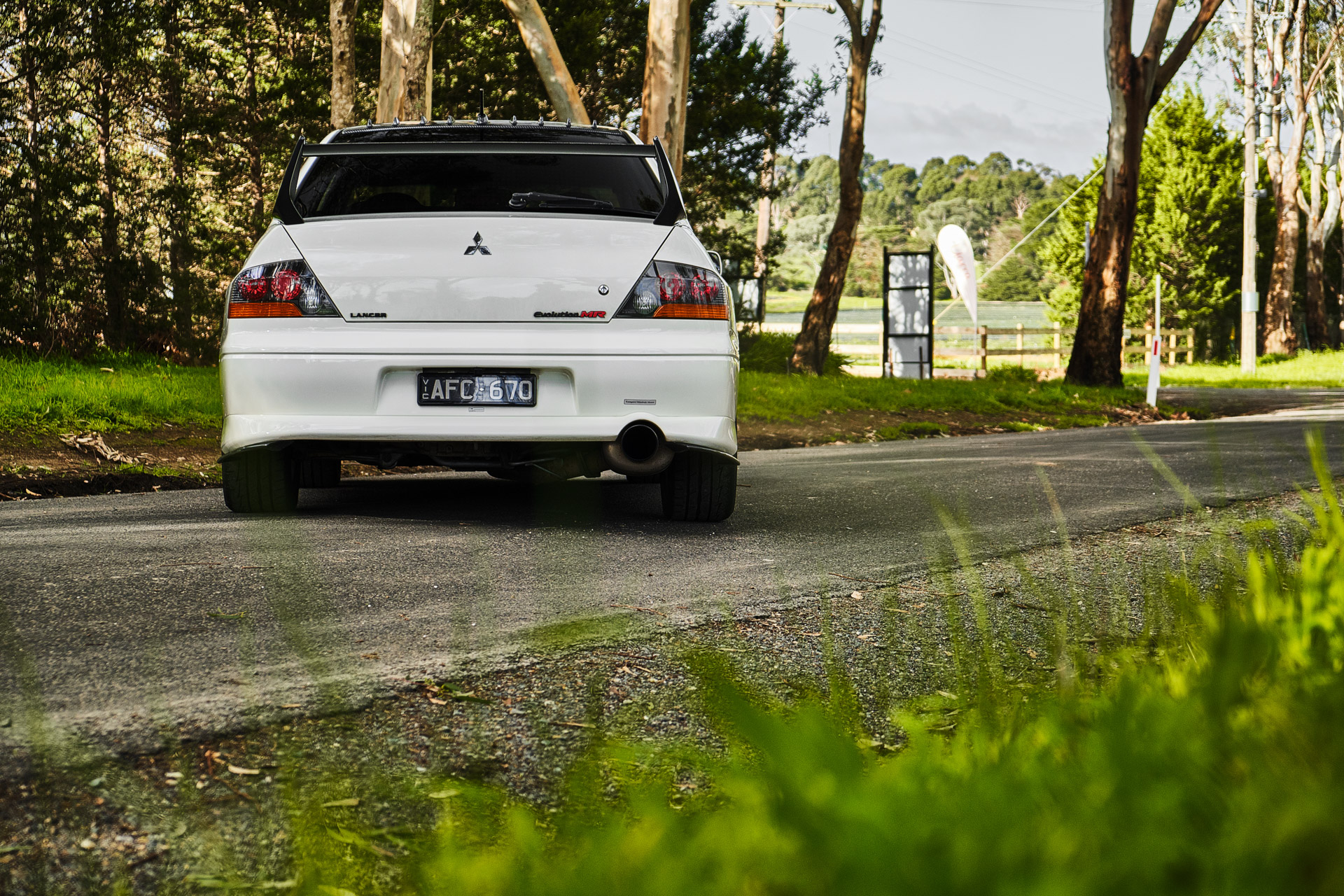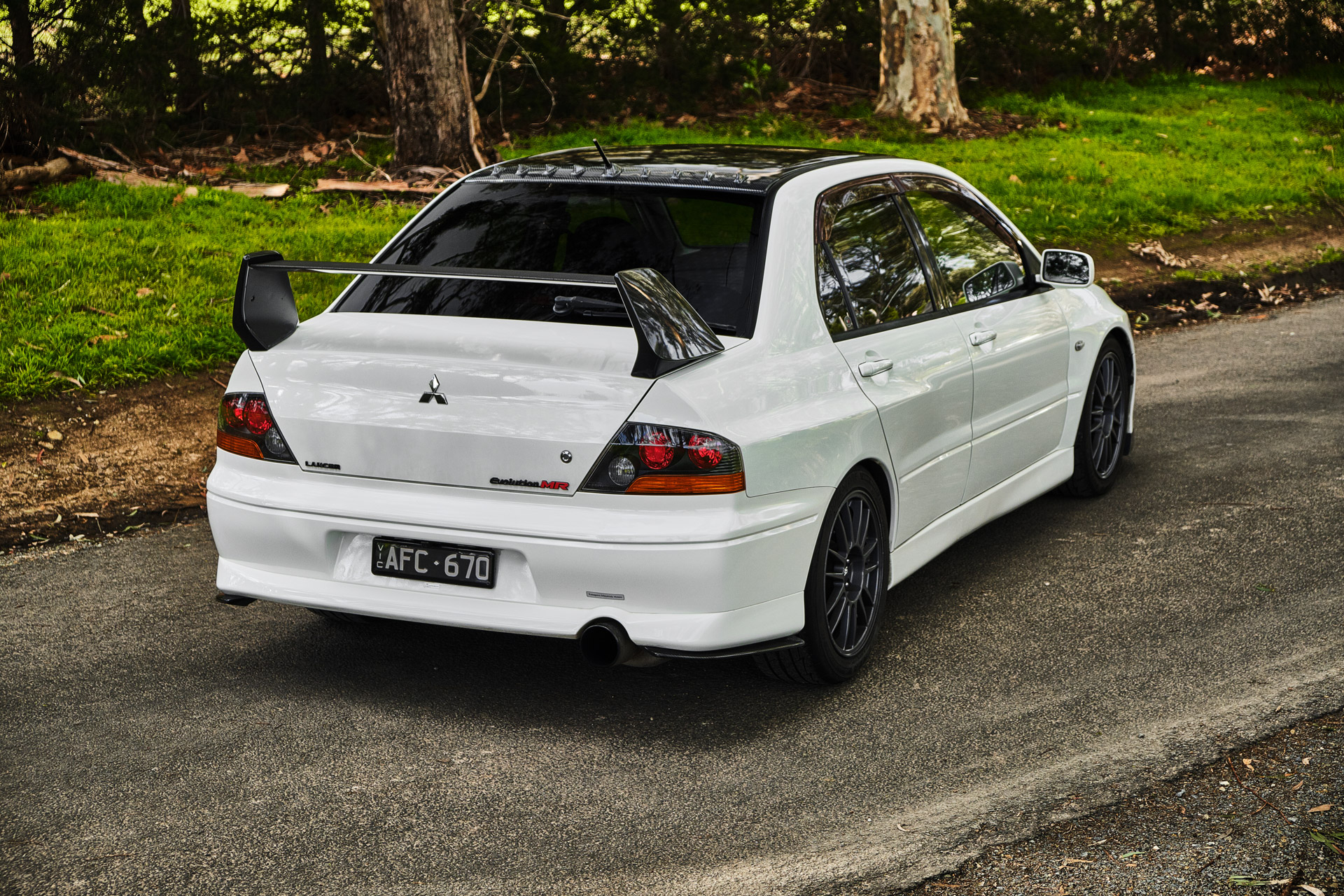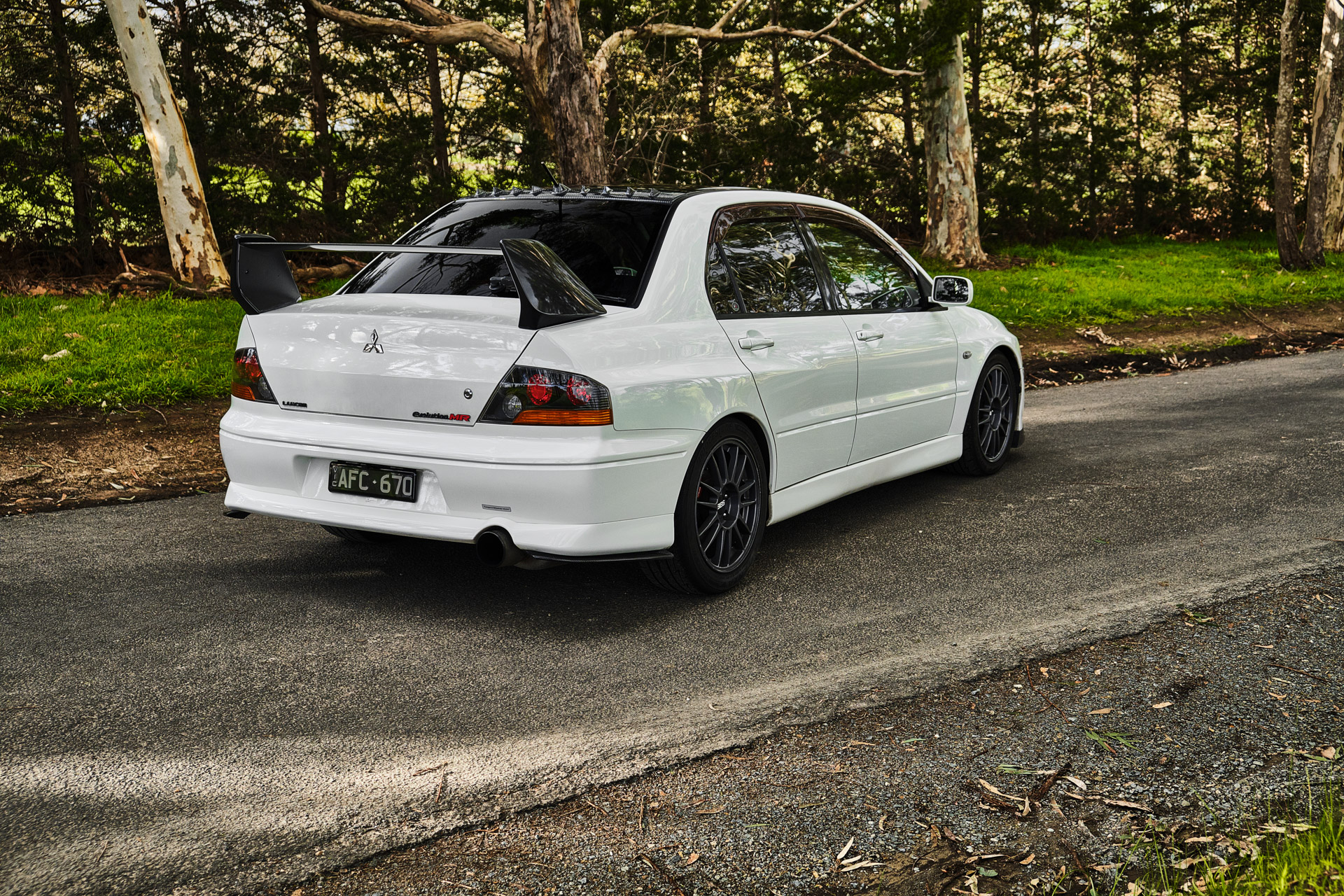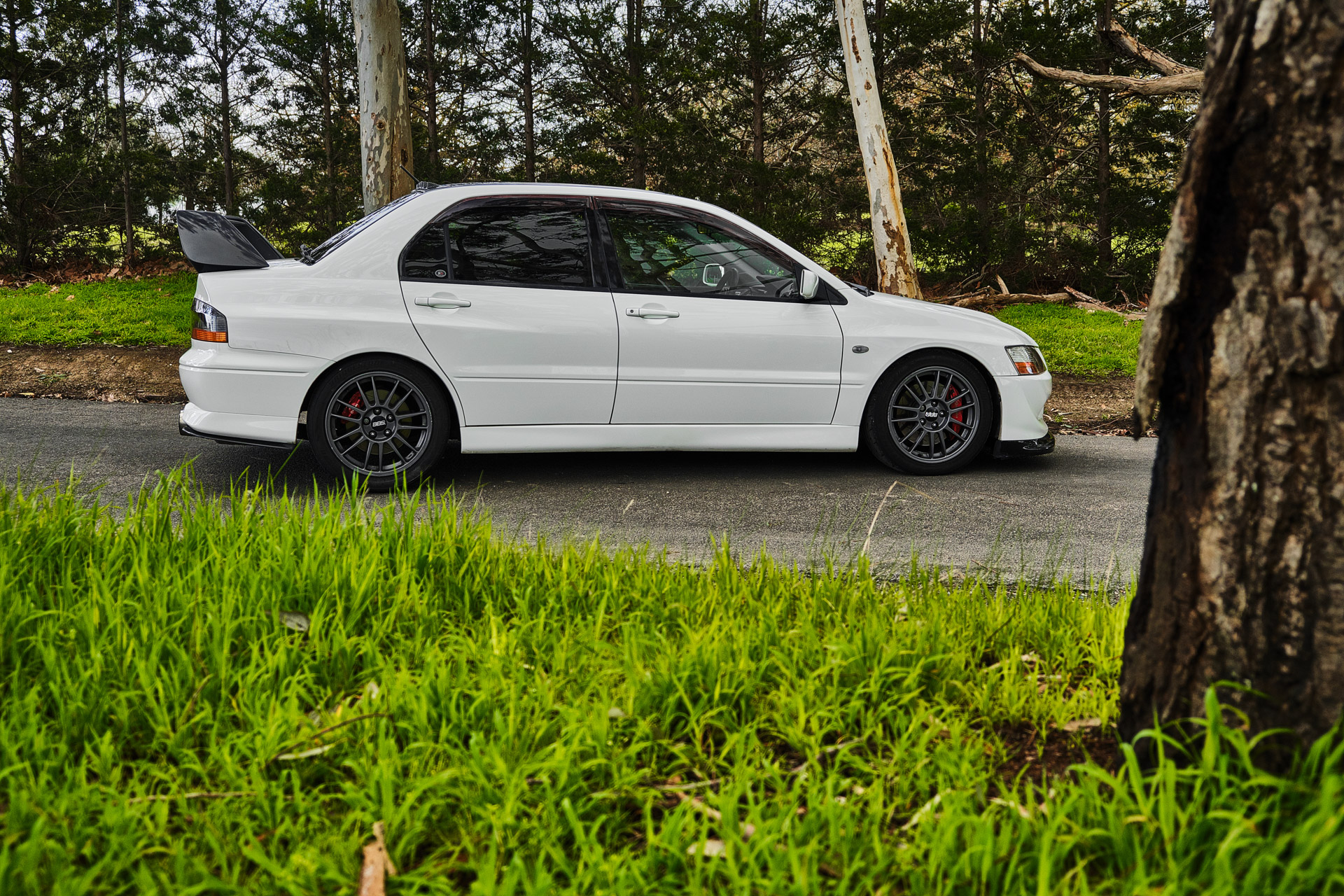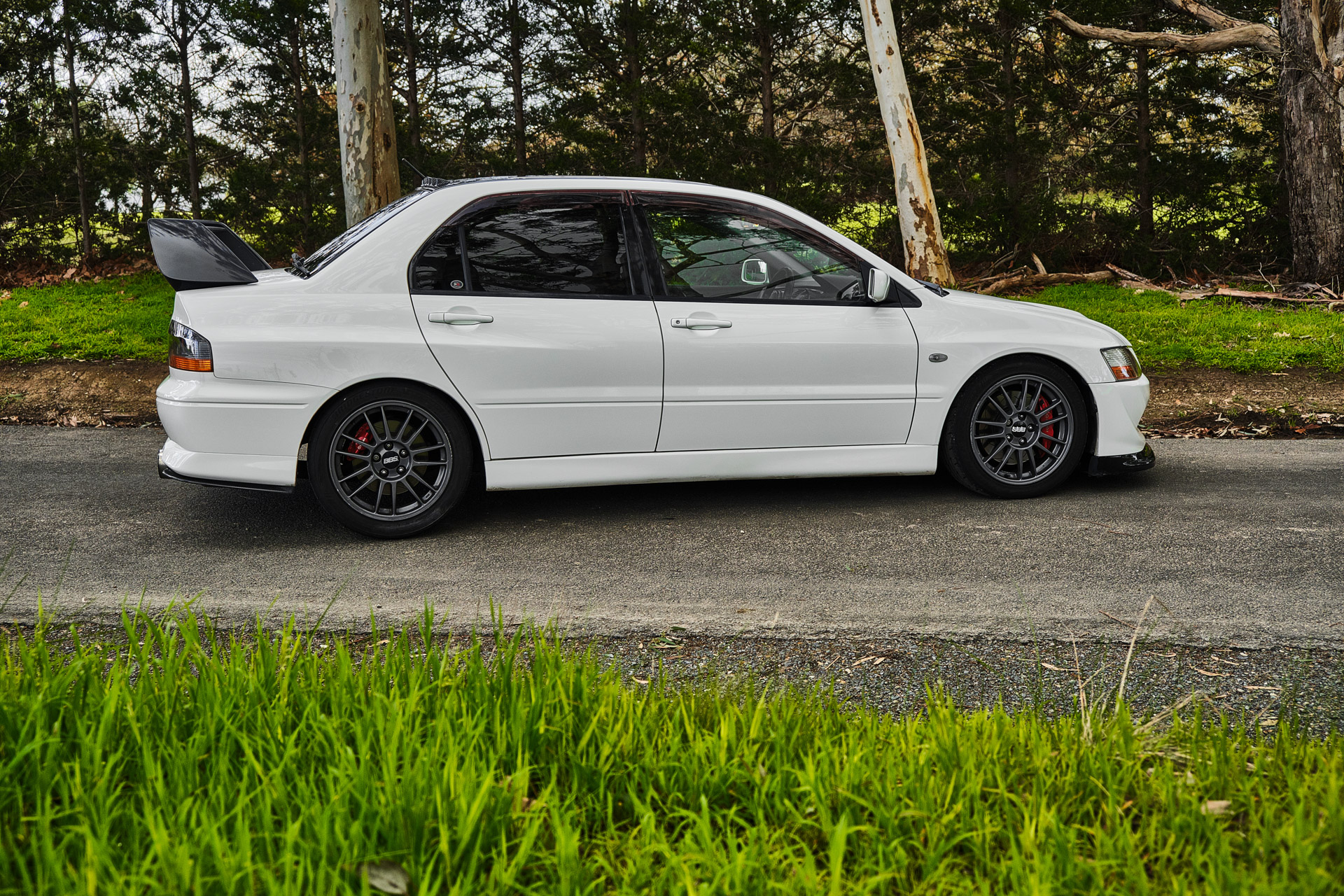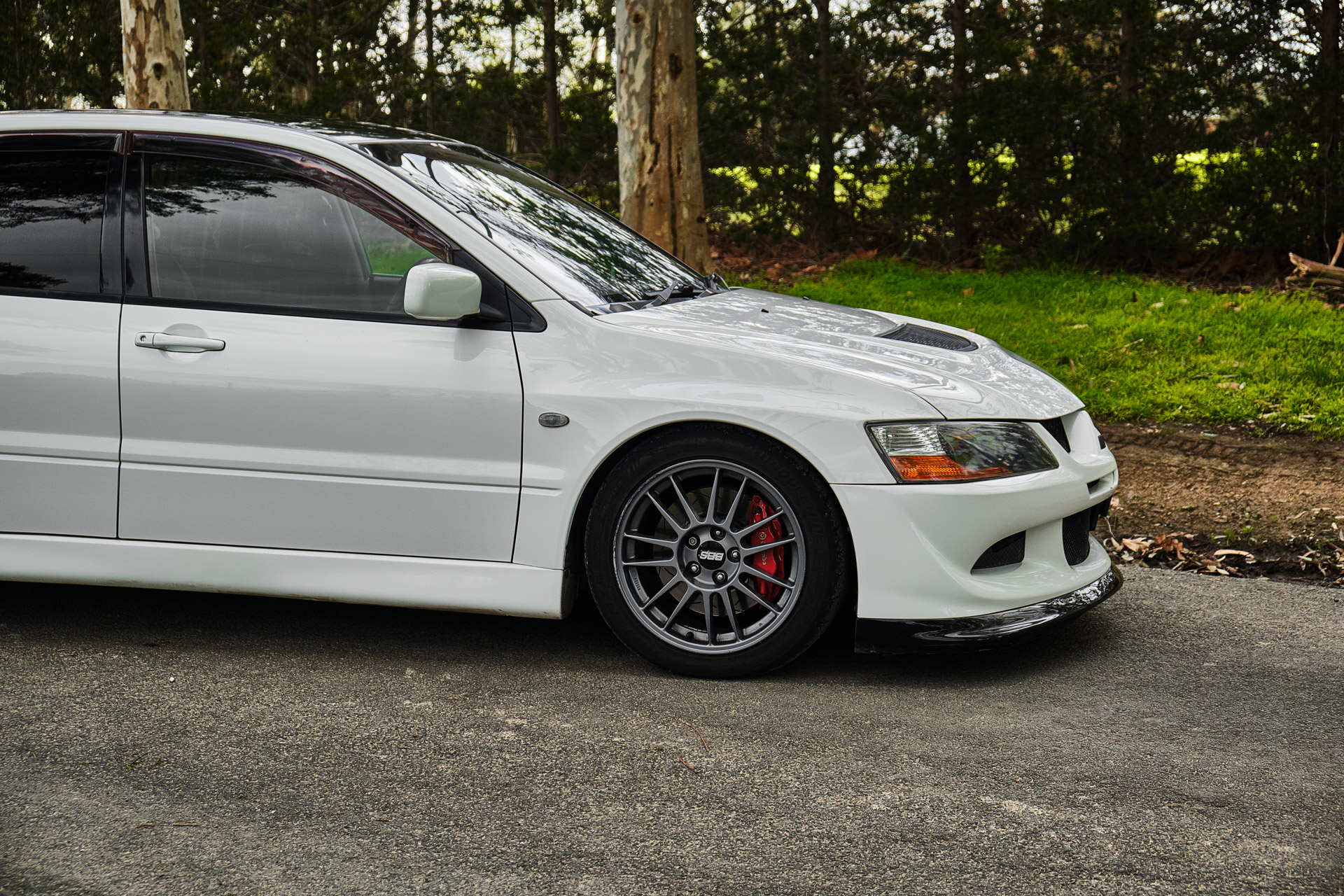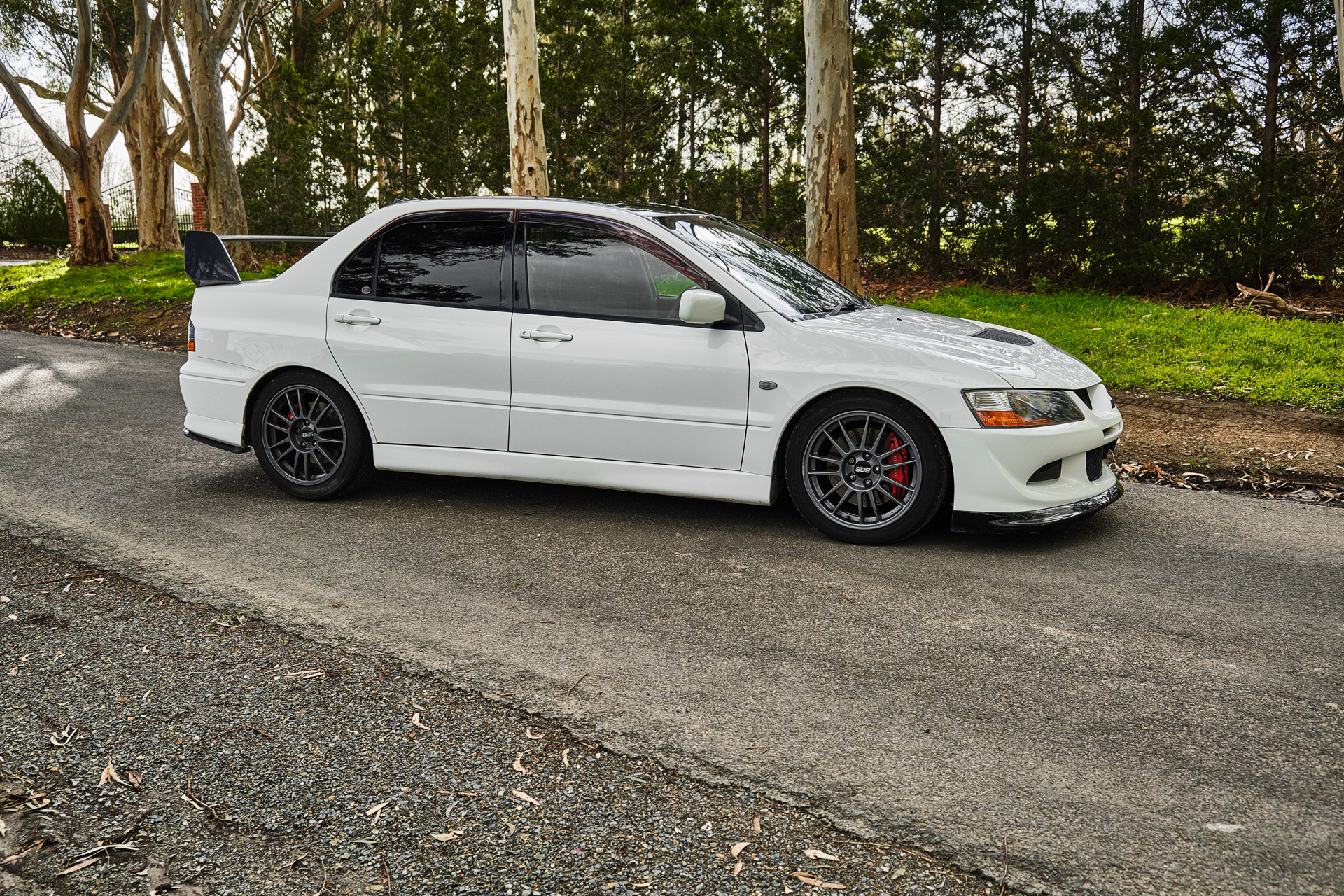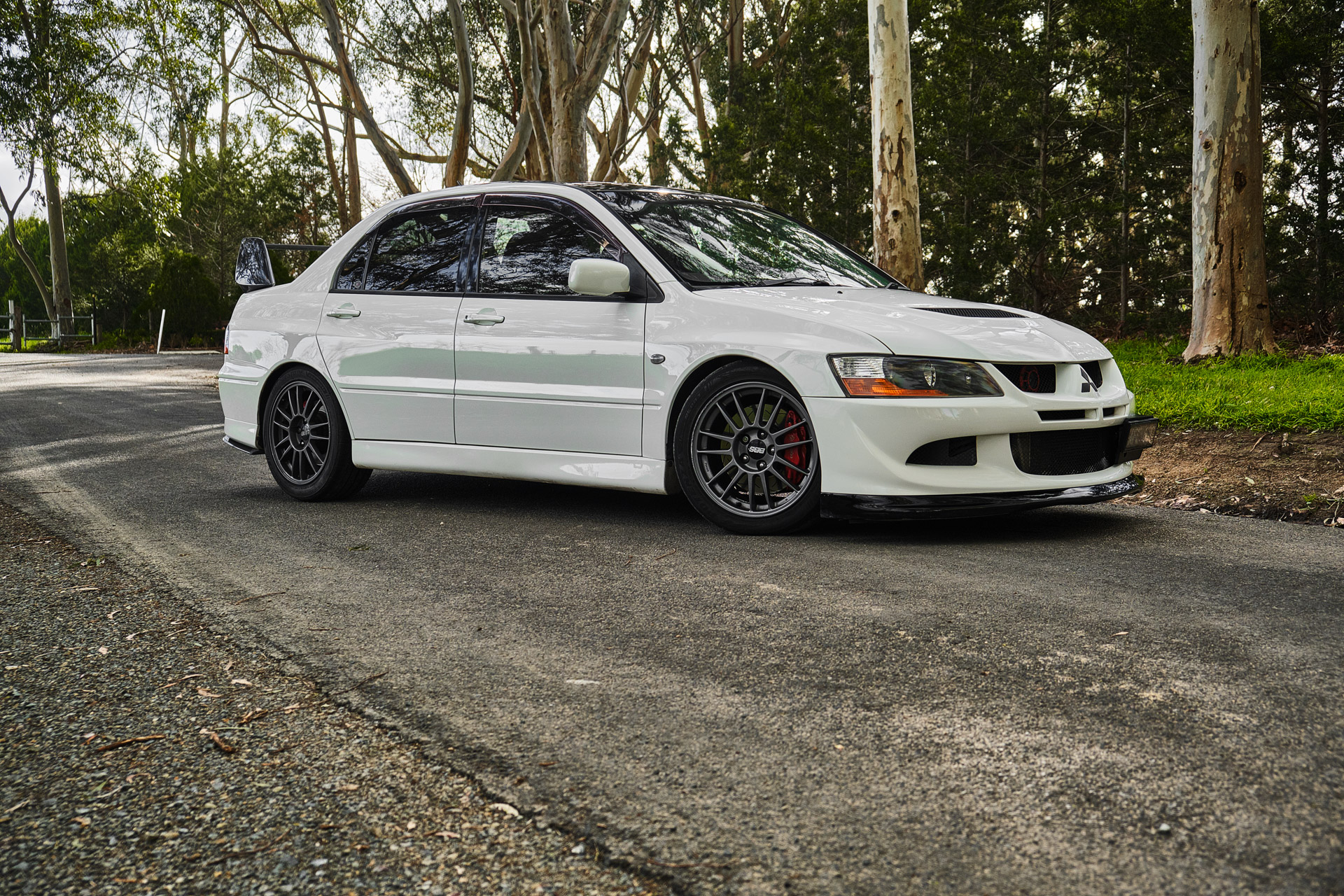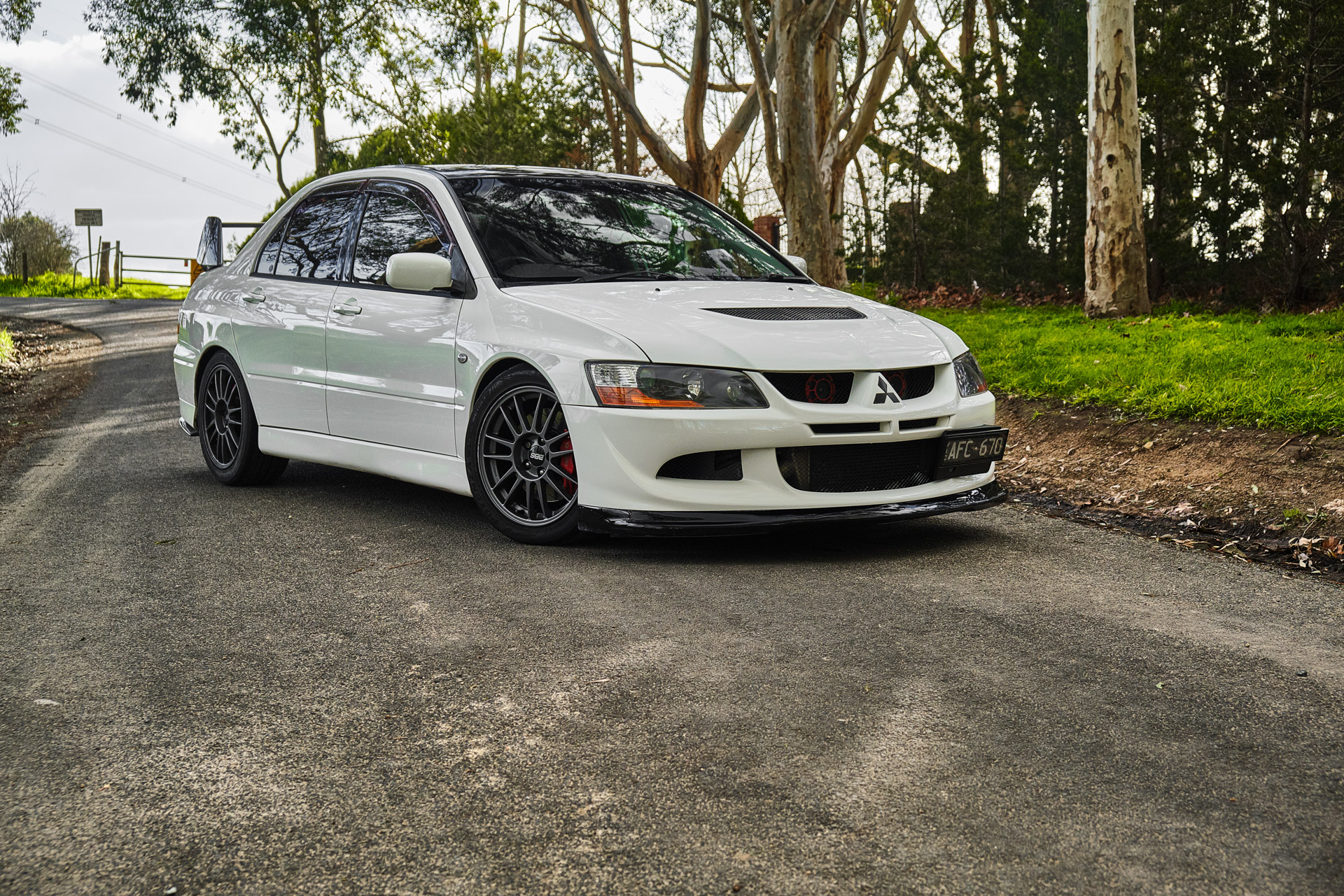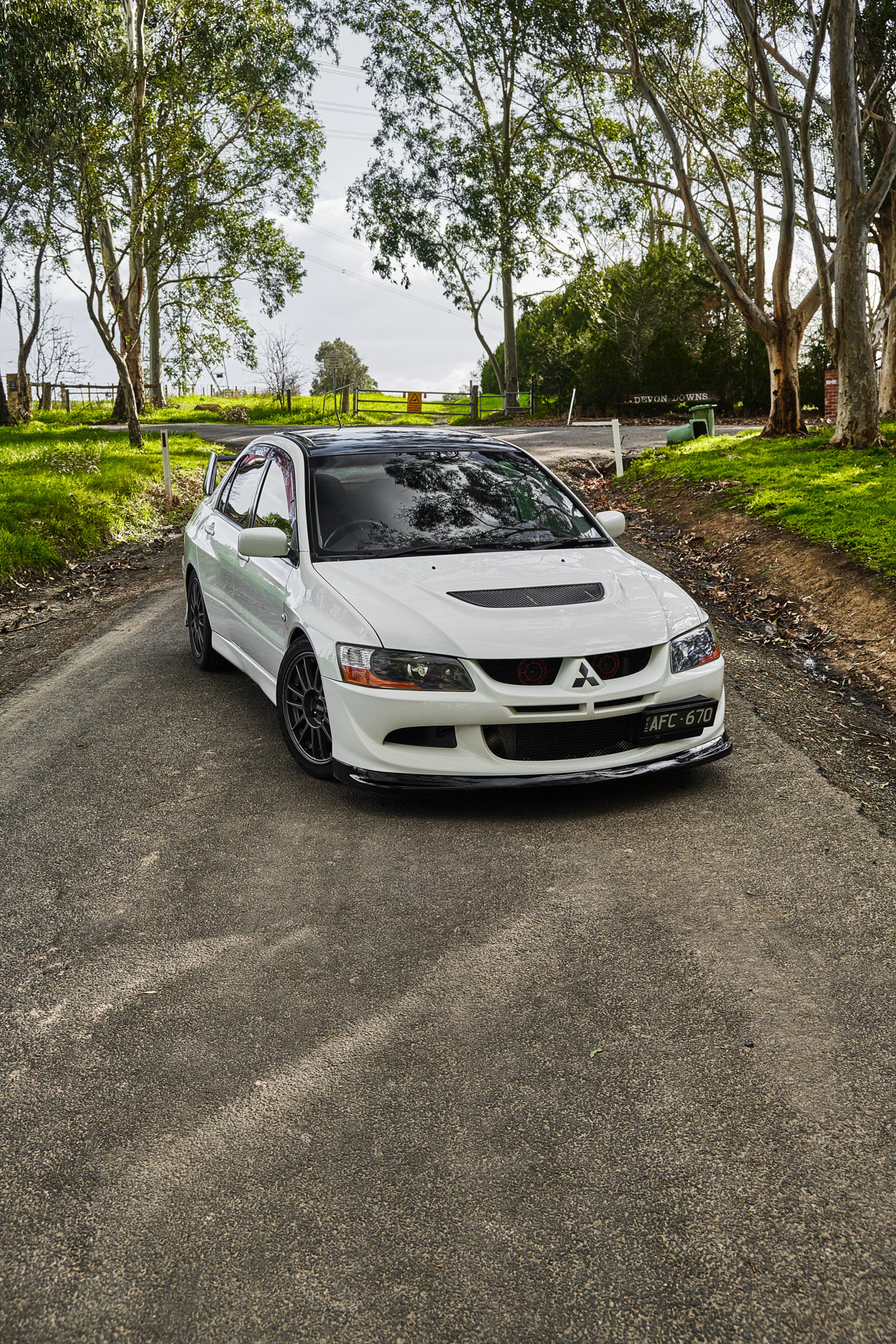I first laid my eyes on a Mitsubishi Lancer Evolution VIII when I was probably nine or 10 years old.
Struck by the design of the super sedan out of Japan, I entered a design competition run by Mitsubishi at that year’s Melbourne Motor Show. The brief, from what I recall, was to design something to reflect the future of the brand. A few weeks later, I posted off by hand-drawn design and waited.
A few weeks later, I received a parcel from Mitsubishi in the post. It included a letter from the company, my original design drawing, and a drink bottle. In the letter, I was informed that my sketch was a good try – but not enough to win. I still have that drawing. It shows the Mitsubishi logo, has some stars in the background, and includes the phrase ‘Zoom-Zoom’ across the background. Sadly, I had thought ‘Zoom-Zoom’ was the phrase used by Mitsubishi when instead it was used by Mazda. An honest mistake yet… damn!
A childhood dream comes true
Fast forward a touch over a decade, and one of my good friends purchased a 2004 Lancer Evolution VIII MR and handed me the keys. They say you should never meet your heroes, but I did.
The Lancer Evolution launched at what I consider to be the end of the golden age for Japanese sports cars. From the early 1990s through to the mid-2000s, most major car companies from the Land of the Rising Sun were building high-performance sports cars the likes of which the world had never seen before.
You had Nissan with the Silvia and the unforgettable R32, R33, and R34 generations of the Skyline Toyota was building the MKIV Supra and MR2. Mazda’s rotary-powered RX-7 was setting hearts on fire. Honda was building hardcore drivers’ cars like the S2000 and Integra Type R. And then you had Subaru and Mitsubishi building rally cars for the street in the form of the WRX STi and Lancer Evolution. Mind you, we have the FIA to thank for that, as its regulations for Group A racers mandated that a production version had to be built in certain numbers in order to be eligible for the series.
Mitsubishi at its absolute finest
Production of the first-gen Lancer Evolution started in late 1992 and, over the next 15 years, no less than nine generations launched culminating in the X. To the Evo faithful, however, the 10-generation was somewhat of a letdown, due to it being decidedly softer than its predecessors and ditching the 4G63 engine that powered all previous iterations.
My friend’s Evo VIII is the desirable MR variant, which wasn’t sold new in Australia but was imported from Japan in 2015. Key differences between an MR and a ‘regular’ Evo include new Bilstein shocks as standard, BBS wheels, a rear vortex generator, an aluminium roof, active center differential, new cams, a six-speed manual transmission (instead of a five-speed one) and a few other performance-oriented parts. The regular Evo VIII is an exceptional car in its own right. The MR is even better.
The technology found beneath the skin is truly something to behold. It includes an Active Center Differential with its own ECU, which controls the hydraulic pressure that is directed to the clutches to tighten or loosen the differential, improving handling drastically depending on the driving scenario and road surface.
The Evo also pioneered torque vectoring with its Active Yaw Control system that was in its sixth iteration when the VIII launched. This trick piece of tech operates a computer-controlled rear differential that actively splits torque between the wheels thanks to accelerometers that measure everything from steering and braking to throttle inputs and g forces.
Technology way ahead of its day
Powering the Evo VIII MR is Mitsubishi’s 4G63 2.0-liter turbocharged four-cylinder that produced a claimed 280 hp (206 kW) at 6500 rpm from the factory and 295 lb-ft (400 Nm) of torque at 3500 rpm. The Evo, like so many other performance cars out of Japan in the 1990s and 2000s, however, is thought to have slightly more grunt than claimed by the factory, but Japanese regulations at the time meant that no domestic car could have an output exceeding that number (or a speed indicating more than 180 km/h, for that matter).
This particular example has quite a bit more power than stock. It has been fitted with the (improved) turbocharger from an Evo IX, an HKS intake, Tomei dump with a custom downpipe, Fujitsubo Legalis R exhaust, new Bilstein PSS9 coilovers, Toyota Yaris ignition coils (yes, a Yaris – and they’re good), a custom ROM in the ECU to allow for various power maps, and custom-mapped electronic differentials.
A car built for those that love driving
Driving the Evo VIII MR is an unforgettable sensory experience. The Recaro bucket seats tightly hug you and it’s easy to find a comfortable driving position in the car. Push down the clutch, turn the key and that famed four fires into life, producing the kind of sound that sends tingles down your spine.
Mitsubishi’s engineers have perfectly calibrated the weighting and bite point of the clutch so it is very easy to get off the line. Approaching a corner for the first time in the car, I am immediately taken aback by how light the steering is. In fact, it feels more similar to the steering of a modern sports car than the heavier ones you’d find on most other cars of this type from the mid-2000s.
Light steering sometimes results in vagueness and a lack of communication between the driver and what the front wheels are doing. Not the case in the Evo. Why? Because, while it is light, it is also very direct and even small inputs allow you to perfectly position the car when entering a corner – and corners are where the Evo feels most at home.
All of Mitsubishi’s efforts in developing arguably the most advanced all-wheel drive system of its day result in a car that bites into the pavement and never lets go. Jeremy Clarkson famously showed how the all-conquering Evo VIII FQ-400 could keep up with a Lamborghini Murcielago on the Top Gear Test Track and I’ve got no doubt that, up a twisty mountain road, even lesser Evos would leave a Murcielago for dead. Aiding in the extraordinary levels of grip are sticky Bridgestone RE003 tyres. There are also Tarmac, Gravel, and Snow modes to choose from, so all those clever system behave perfectly on each surface.
The car’s active differentials work in such a way that you’re never surprised by some kind of sudden intervention if you’ve overcooked it into a corner. There’s nothing but seamless traction and the seamless shifting of power between the wheels.
Also Watch: 2001 Lancer Evo VII Will Leave You Wondering What The Heck Happened To Mitsubishi
Then there’s the engine. Tuning companies have been working with the 4G63 for decades, strapping on massive turbochargers and extracting monstrous levels of reliable power. It shows.
Depress the throttle even slightly and you are welcomed by the intoxicating spool of the turbocharger turning hot exhaust gases into power. Push it to the floor and the car sprints through time and space much more rapidly than the power and torque figures may suggest. Launching Evos off the line is notoriously difficult without destroying the transfer case (if you do it too many times), but this one can hit 100 km/h (62 mph) in a hair over 4 seconds thanks in part to a two-step ‘launch control.’
What is perhaps even more striking than the outright grunt is just how violently it propels you forward when you hit peak boost. The surging power continues through all the gears and never shows any signs of letting up.
A look at the tachometer shows that the car redlines at 7,000 rpm, but even as you hit that figure, the engine feels like it has a lot more to give. It isn’t uncommon for some engine builders to modify the turbo-four to rev to 9,000 rpm and beyond, but for street use, the factory setting is just about right. The entire package is remarkably smooth during regular driving and certainly doesn’t feel 15 years old. This is particularly evident when you let off the throttle after a full-throttle pull as there is virtually no throttle jerking thanks in part to the Yaris coils and the car’s present tune. The Bilstein coilovers also do a near-perfect job of soaking up bumps.
A car that will be fondly remembered for decades to come
Used car buyers have started to catch on with how good the Evo VIII MR is. In recent years, prices have jumped by at least 25 per cent for good examples as enthusiasts look to purchase a slice of automotive greatness.
It’s hard not to think about what Mitsubishi has become in recent years when driving one of its best and final performance cars. The carmaker has abandoned all of its exciting models while looking to cash-in on demand for SUVs and hybrids. As a result, it now has one of the least exciting line-ups in the industry.
Fortunately, there remain well-maintained Lancer Evos out there owned by true enthusiasts who will ensure the Mitsubishi brand solders on in the minds and hearts of driving purists. Maybe, just maybe, when the SUV craze is over, they will remember their glory days and resurrect the Evo in some form. It might be hybridized, but the important thing is to keep its spirit intact. Or maybe they’ll just go on with EVs and autonomous vehicles. This is a new world for sure, but sometimes the old ways are the best.




